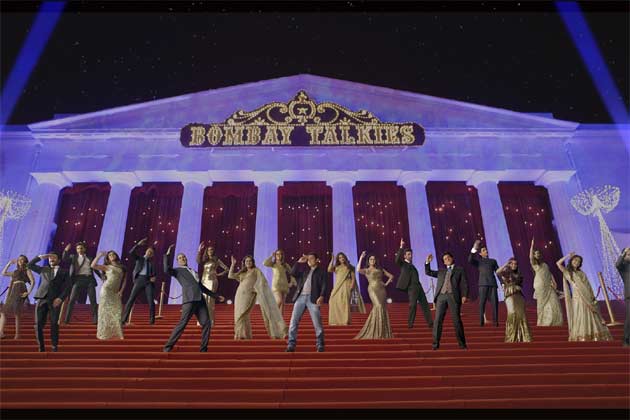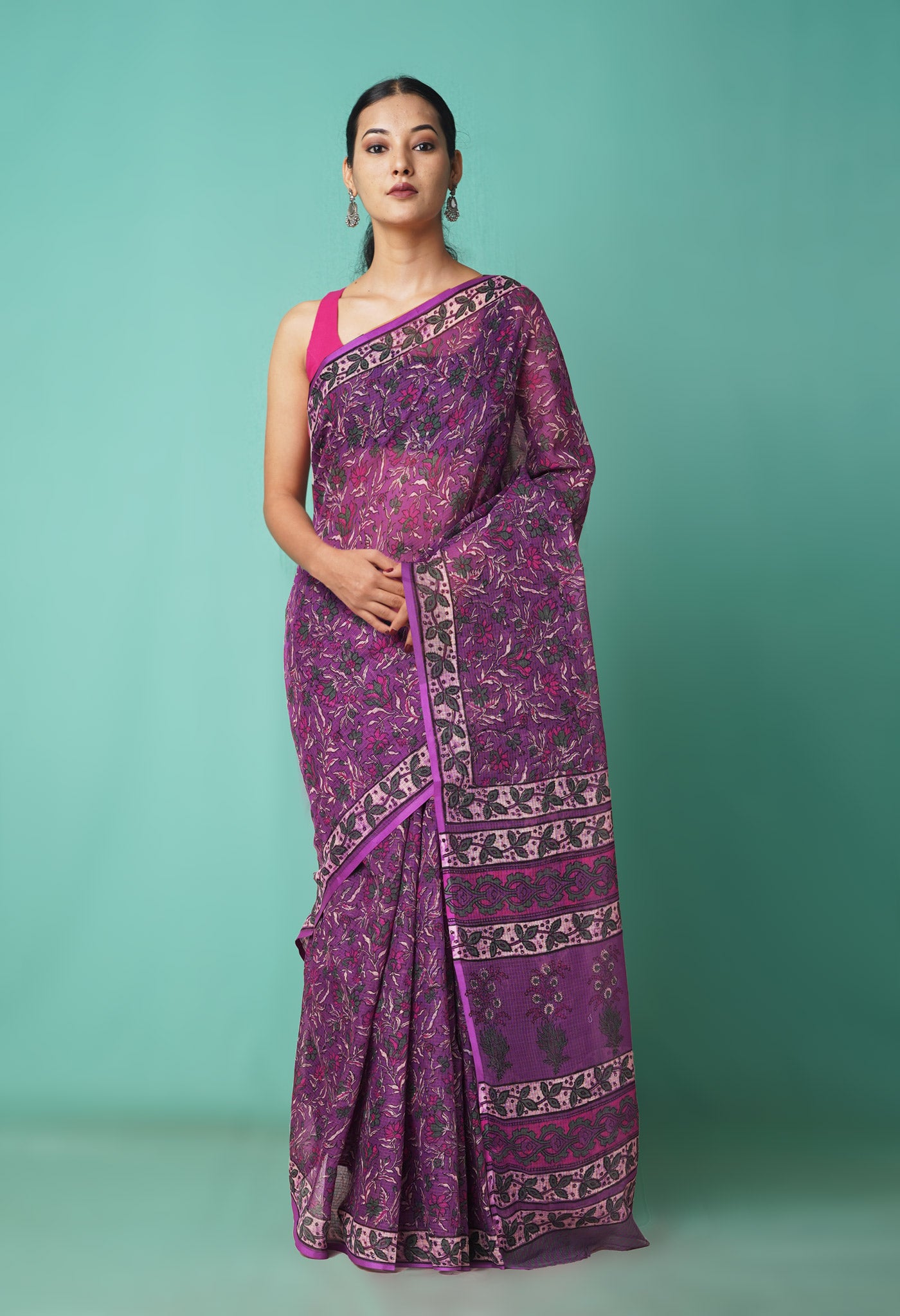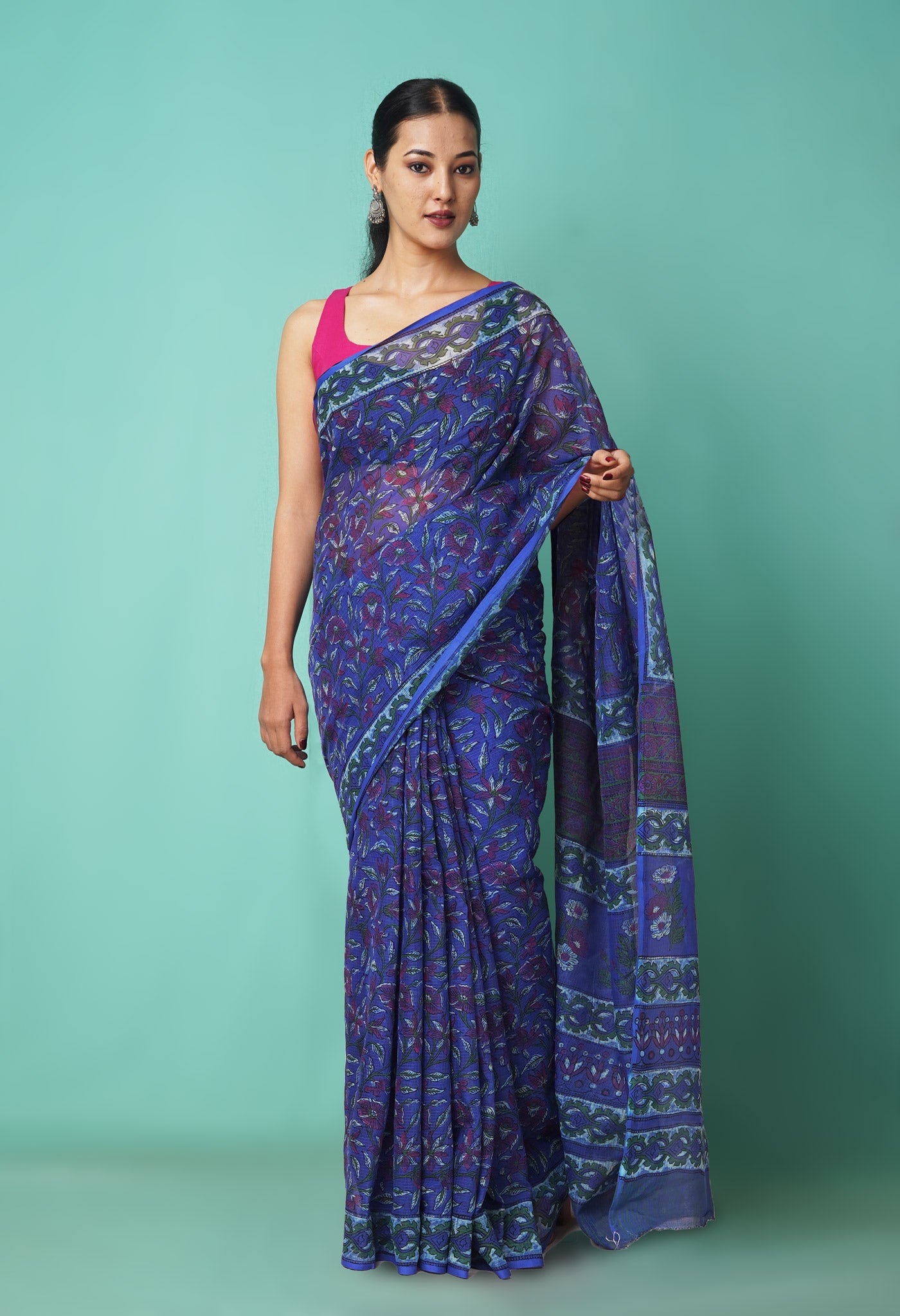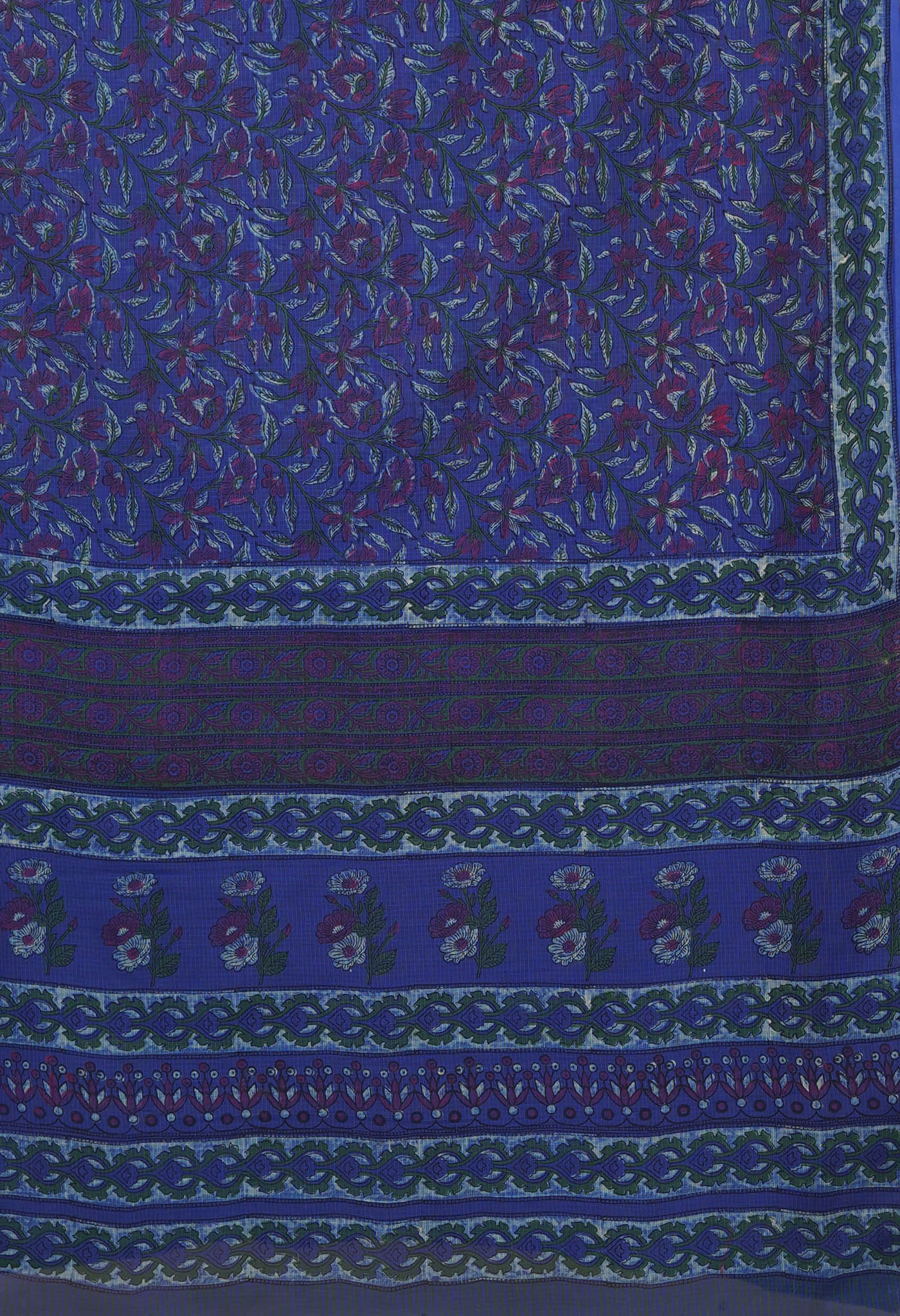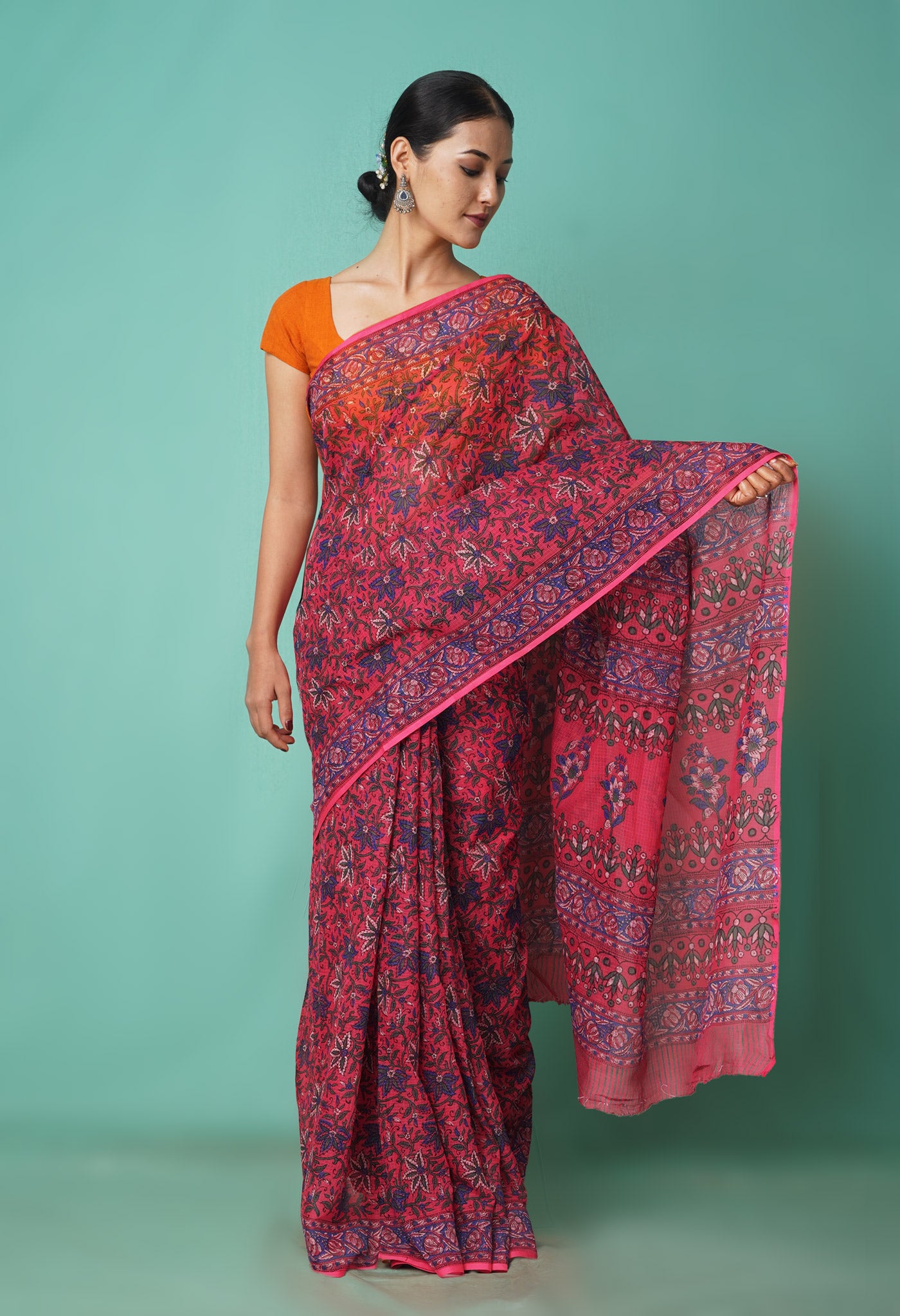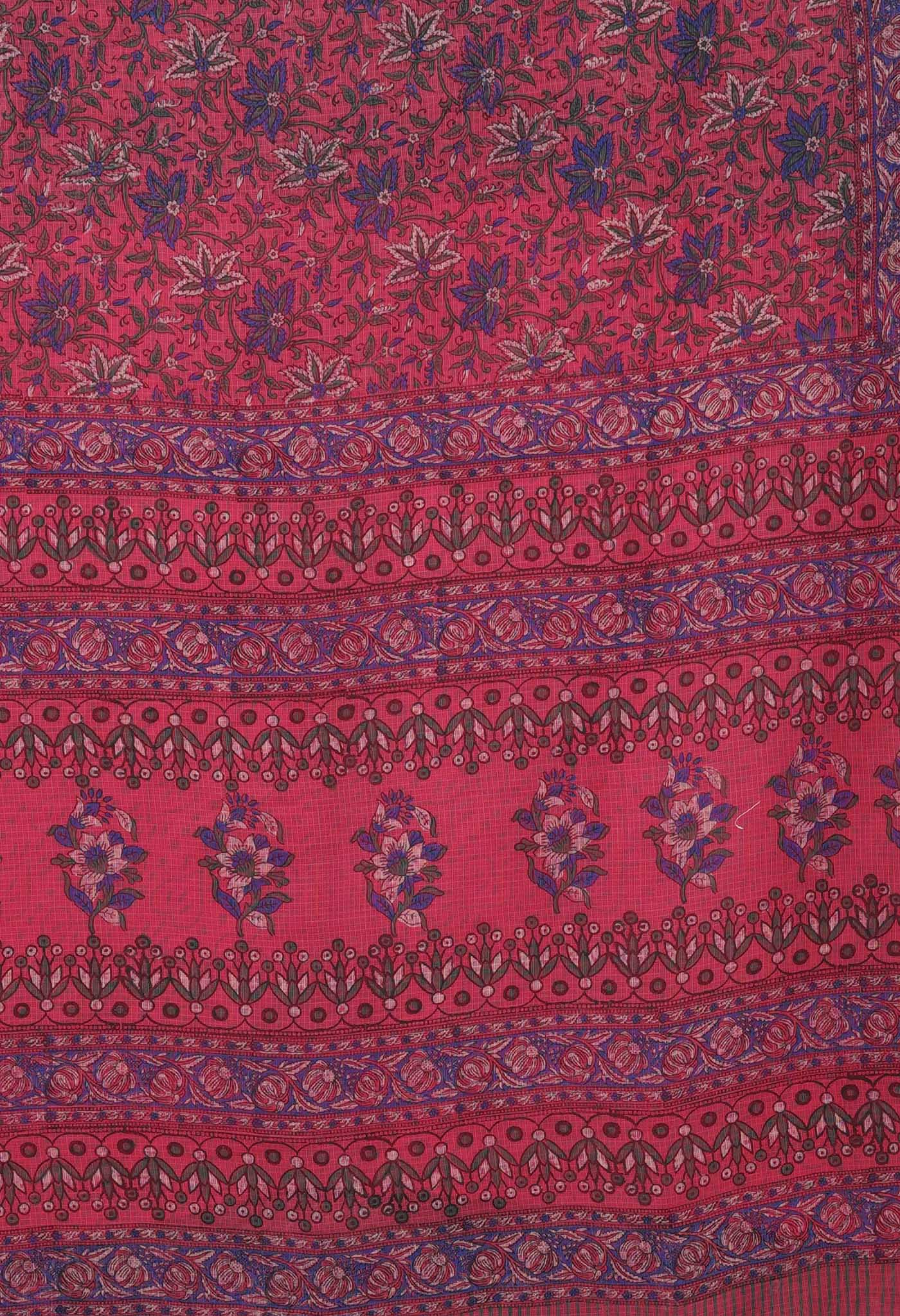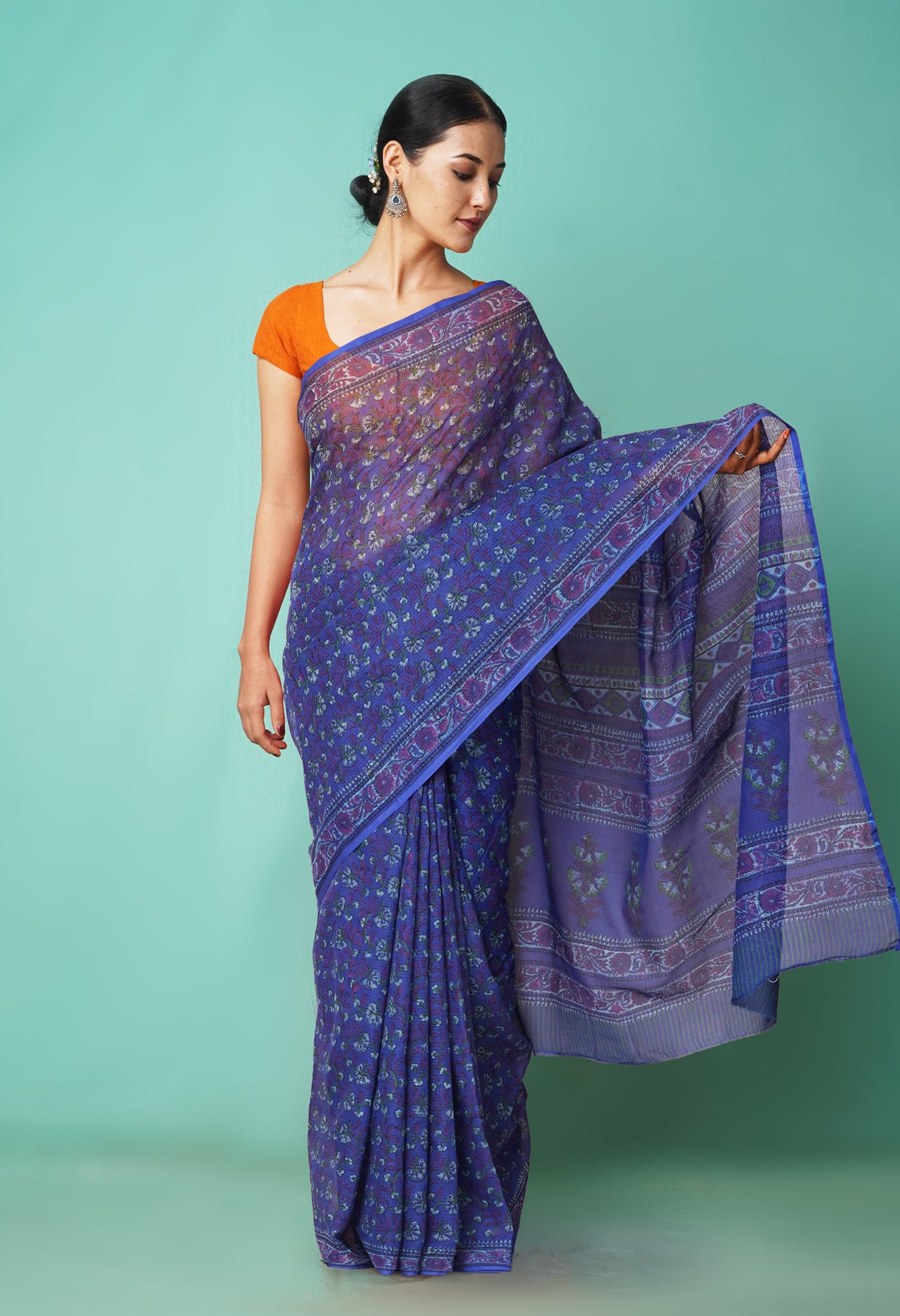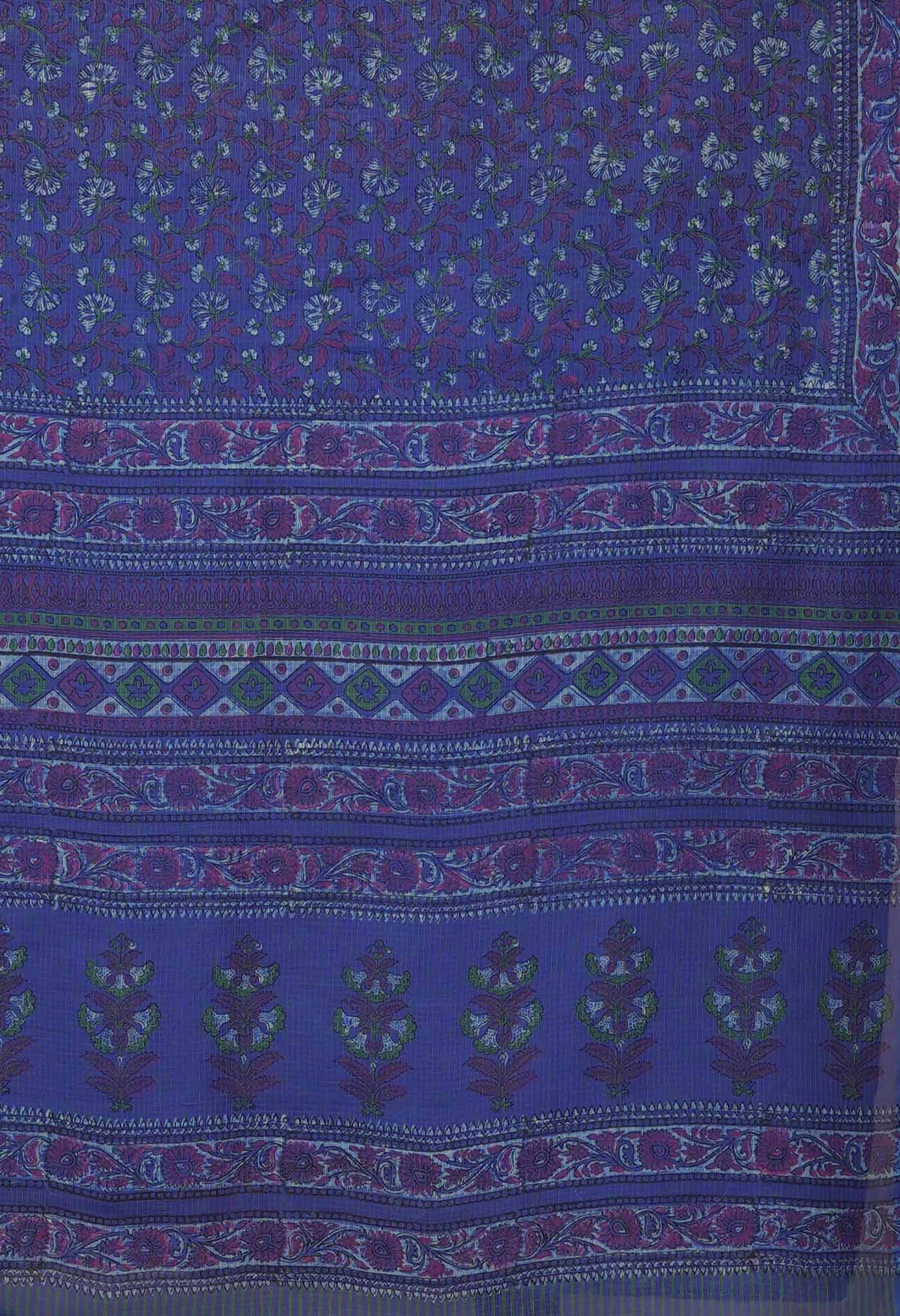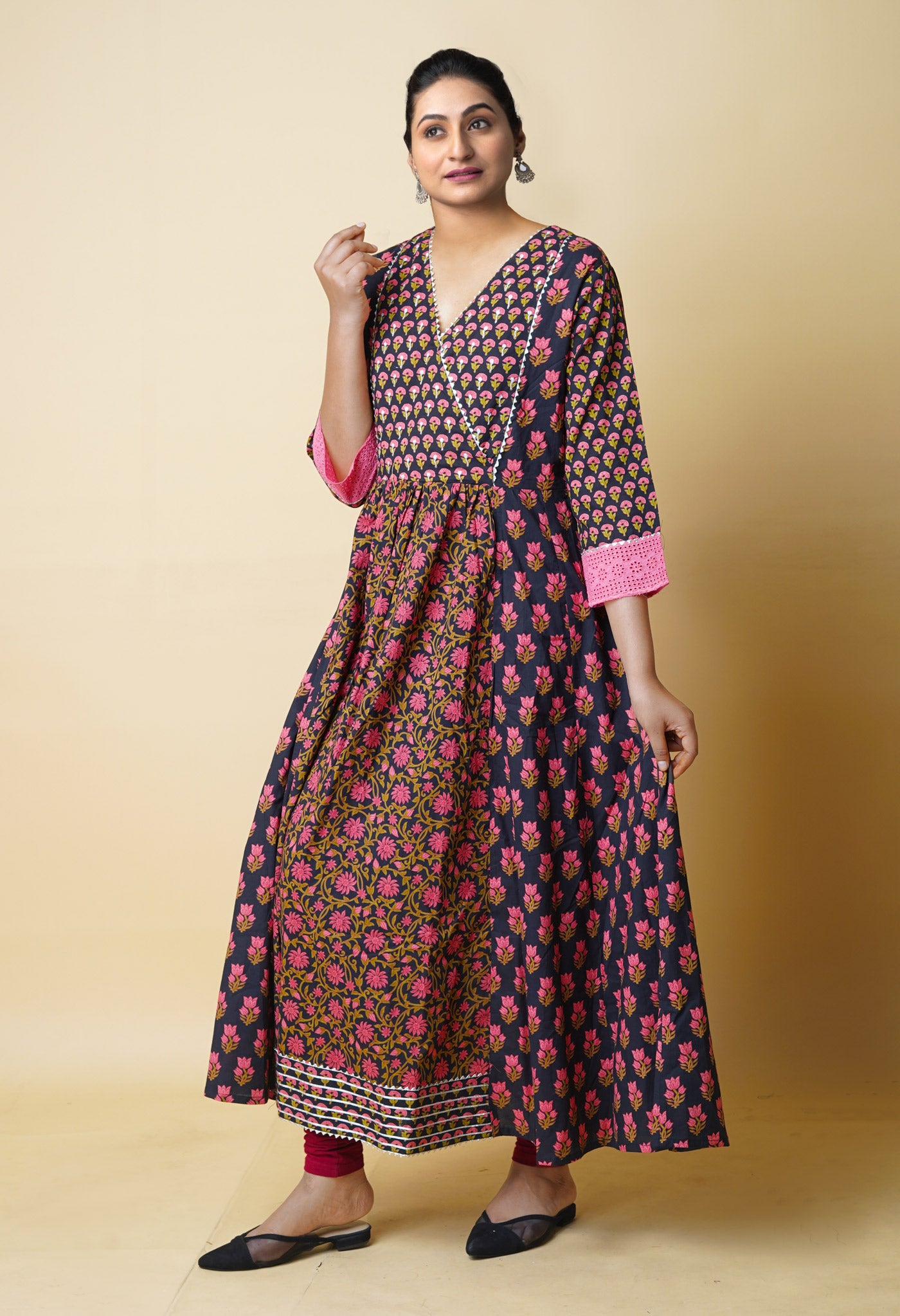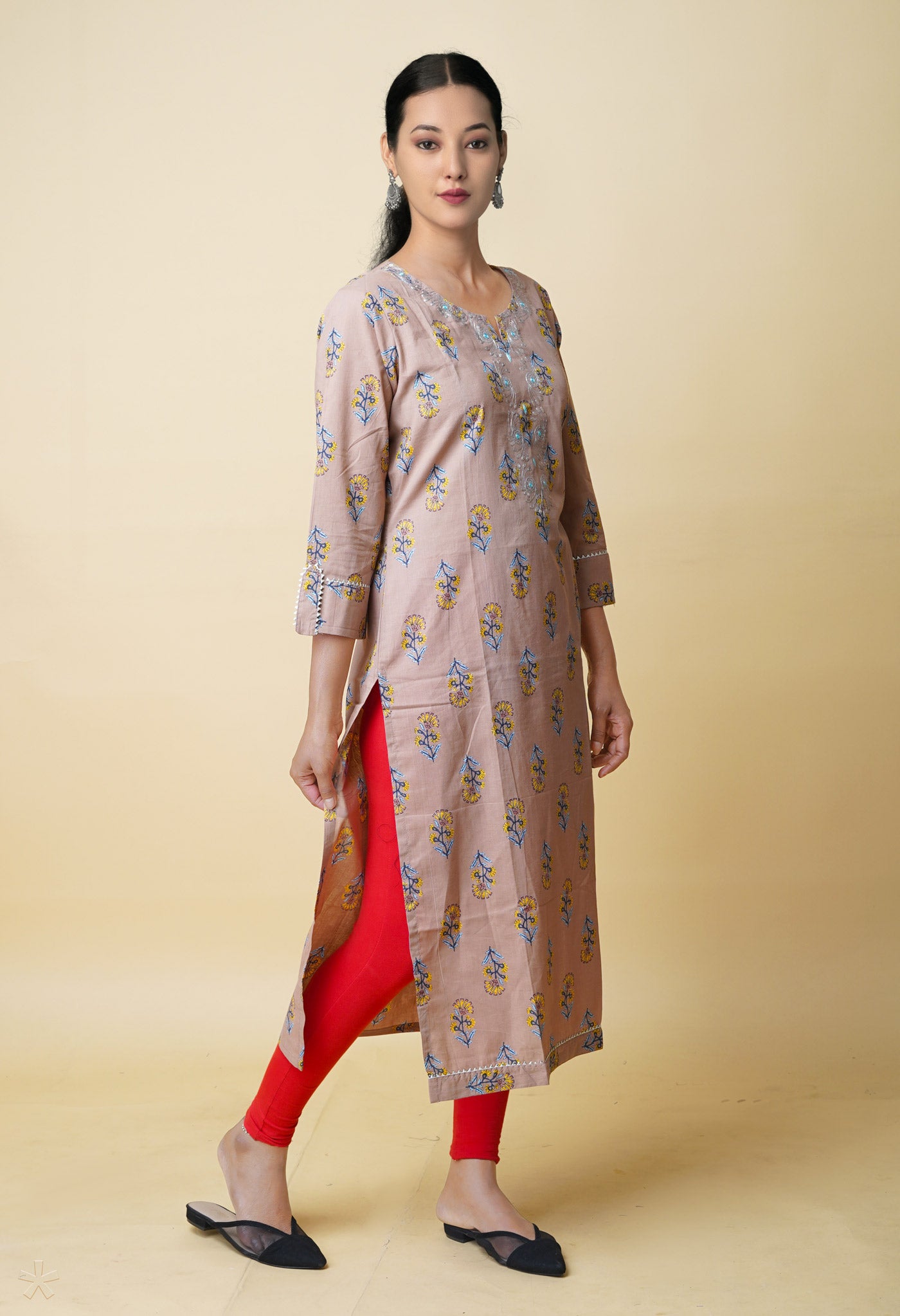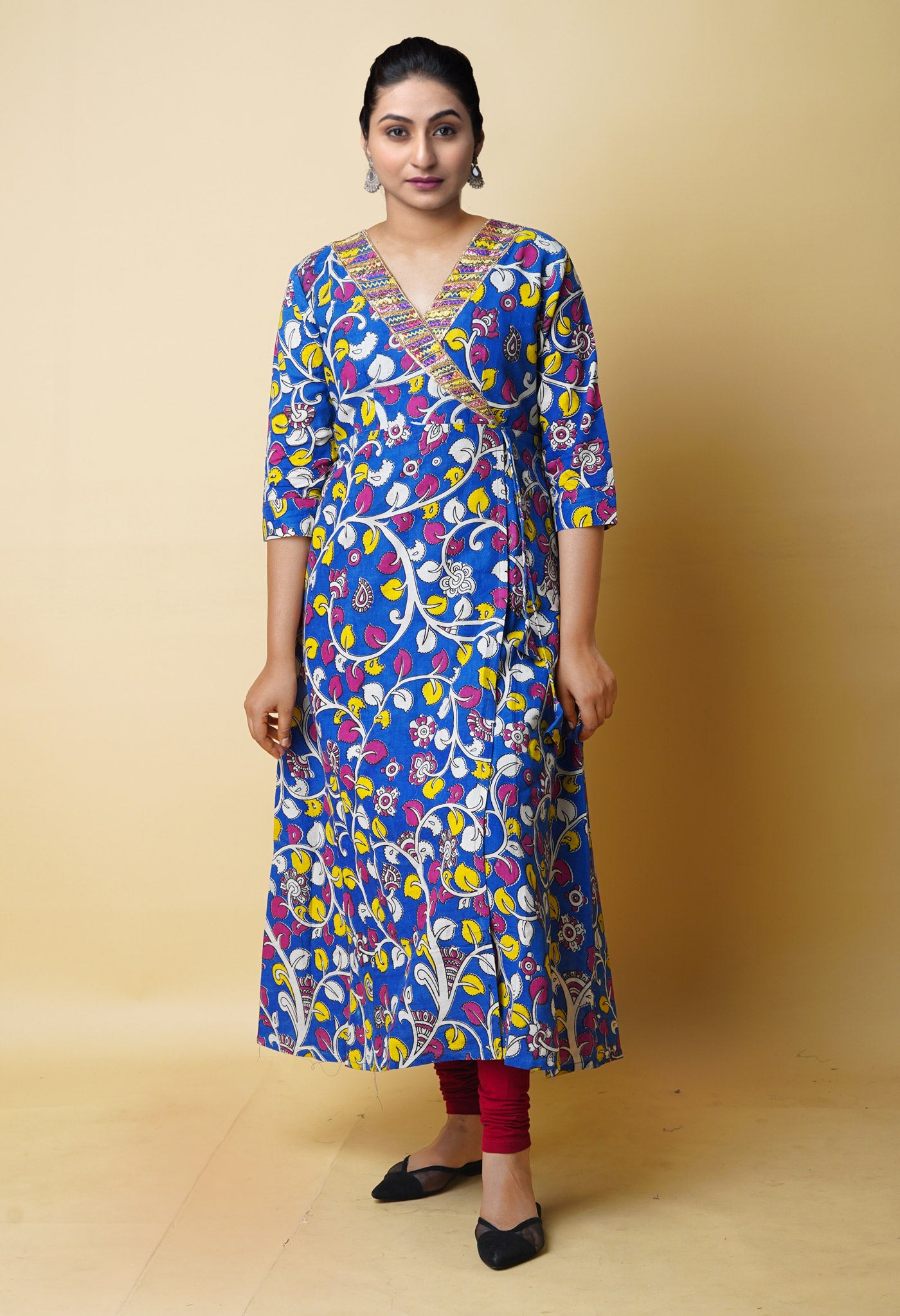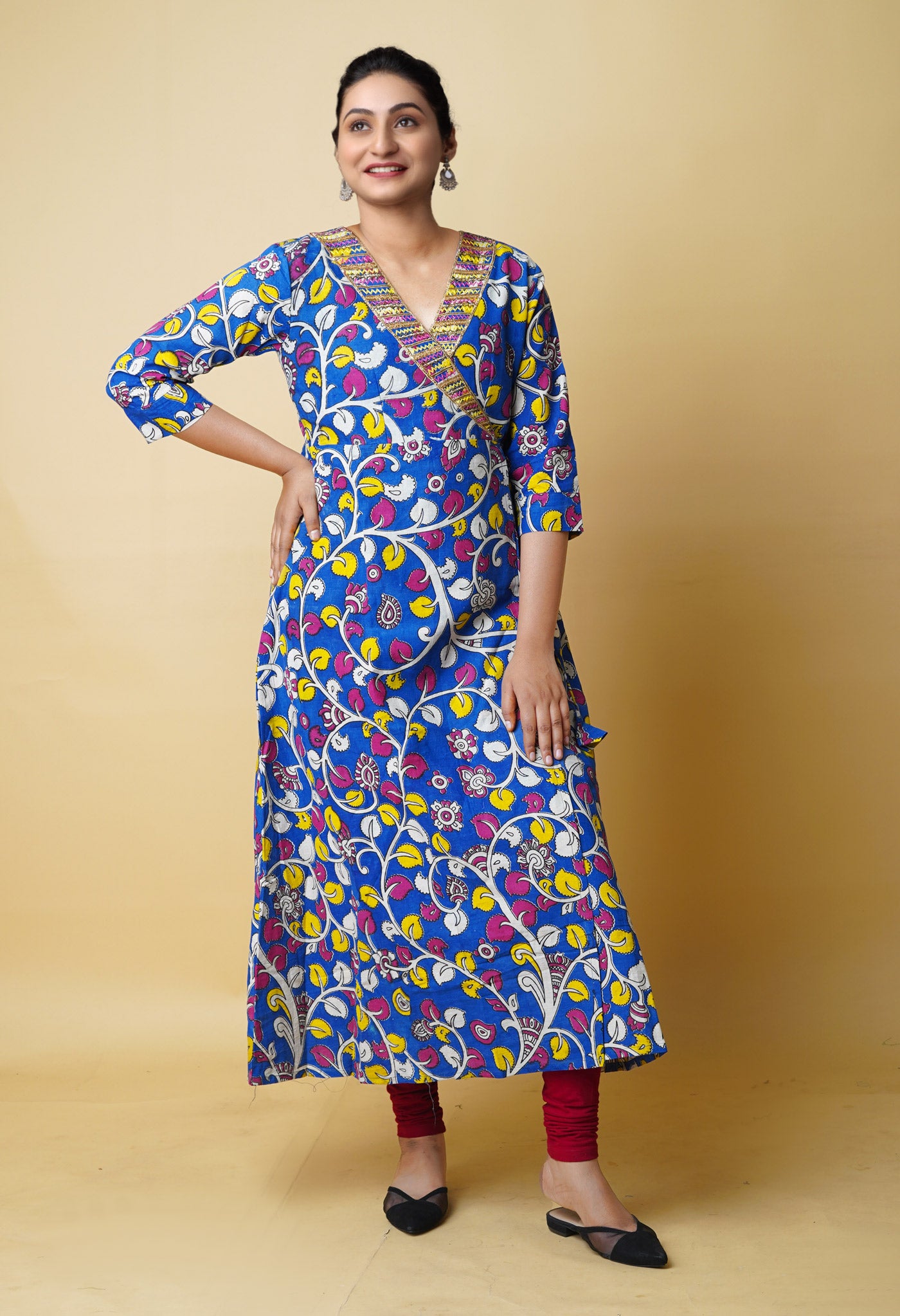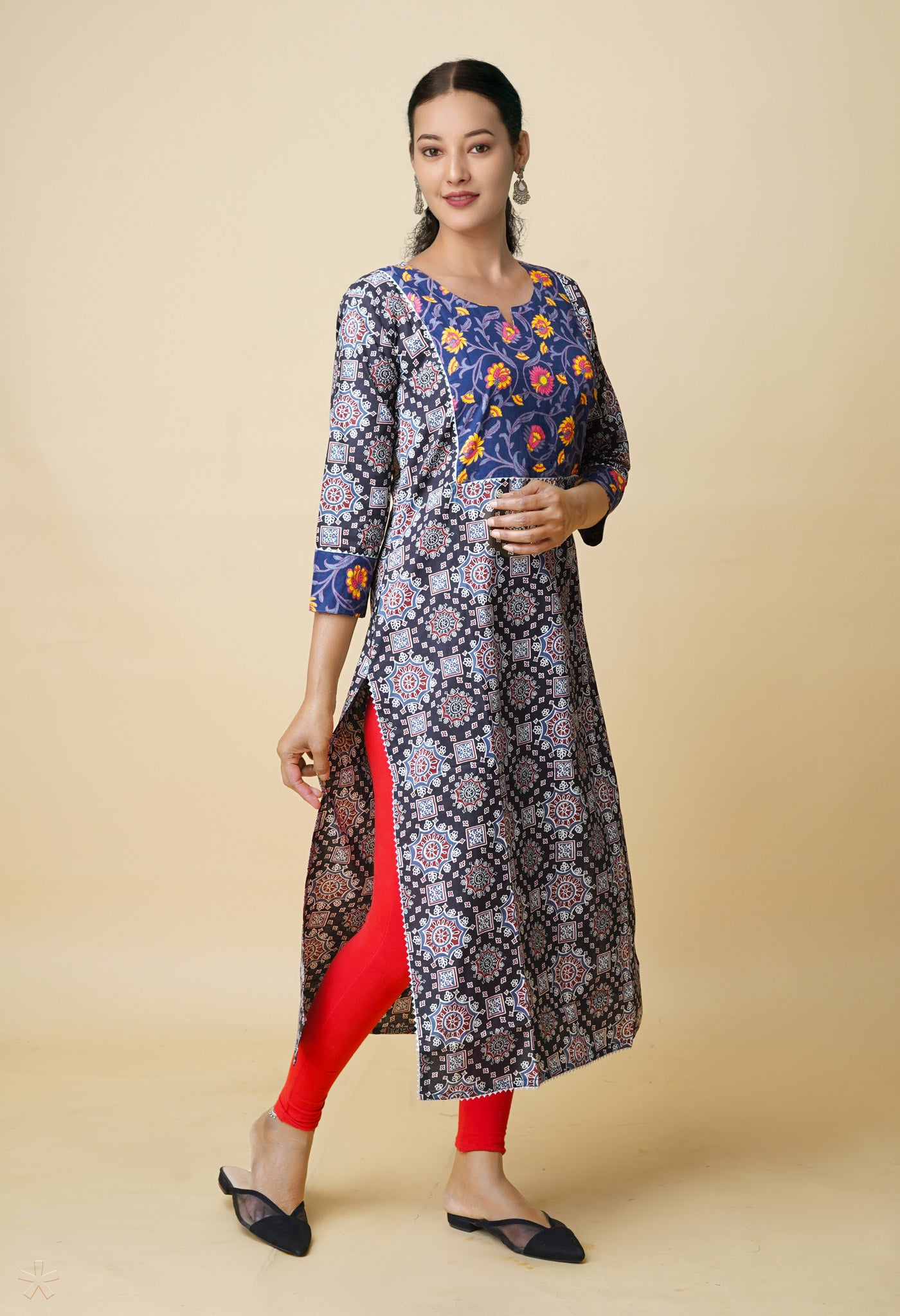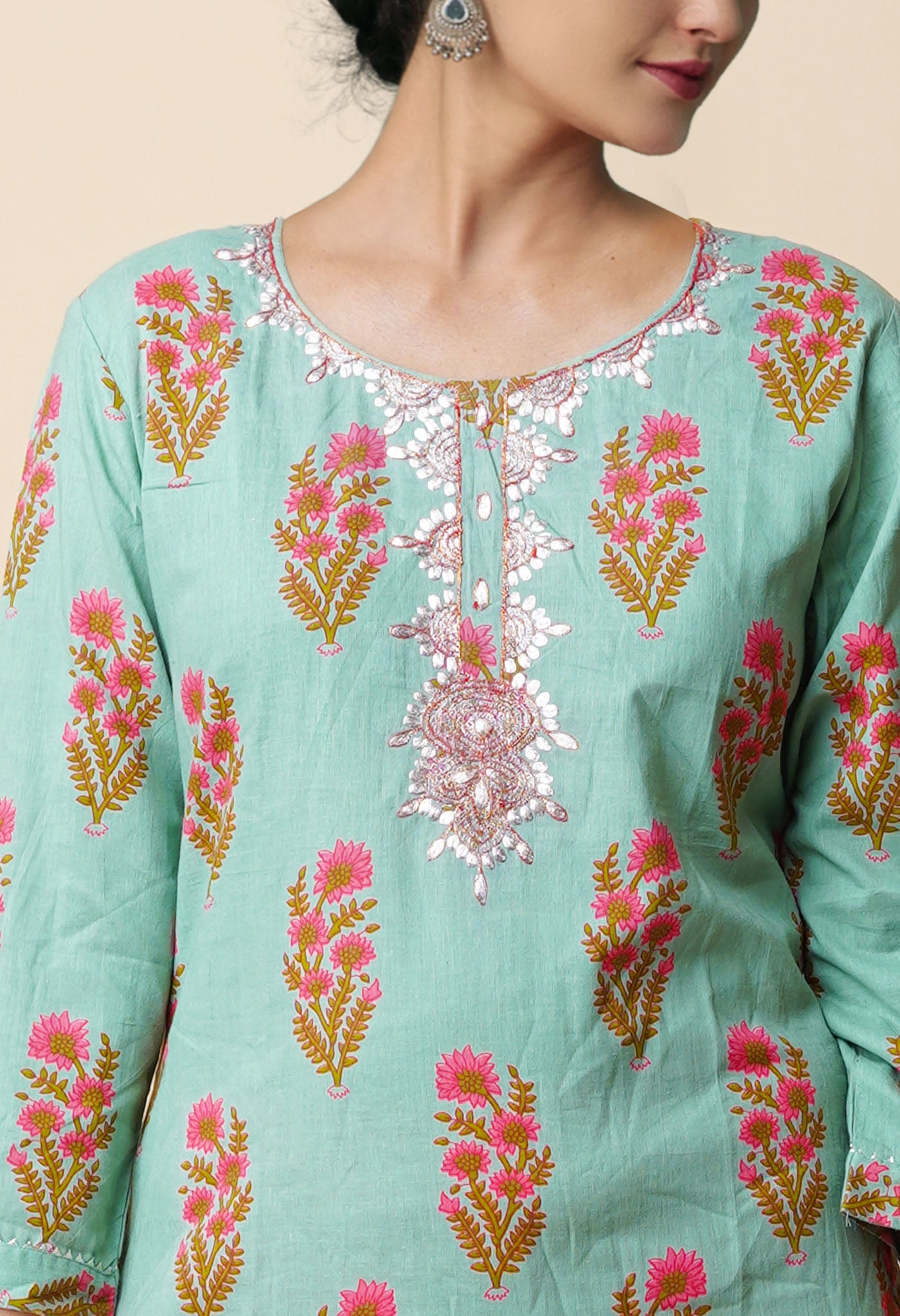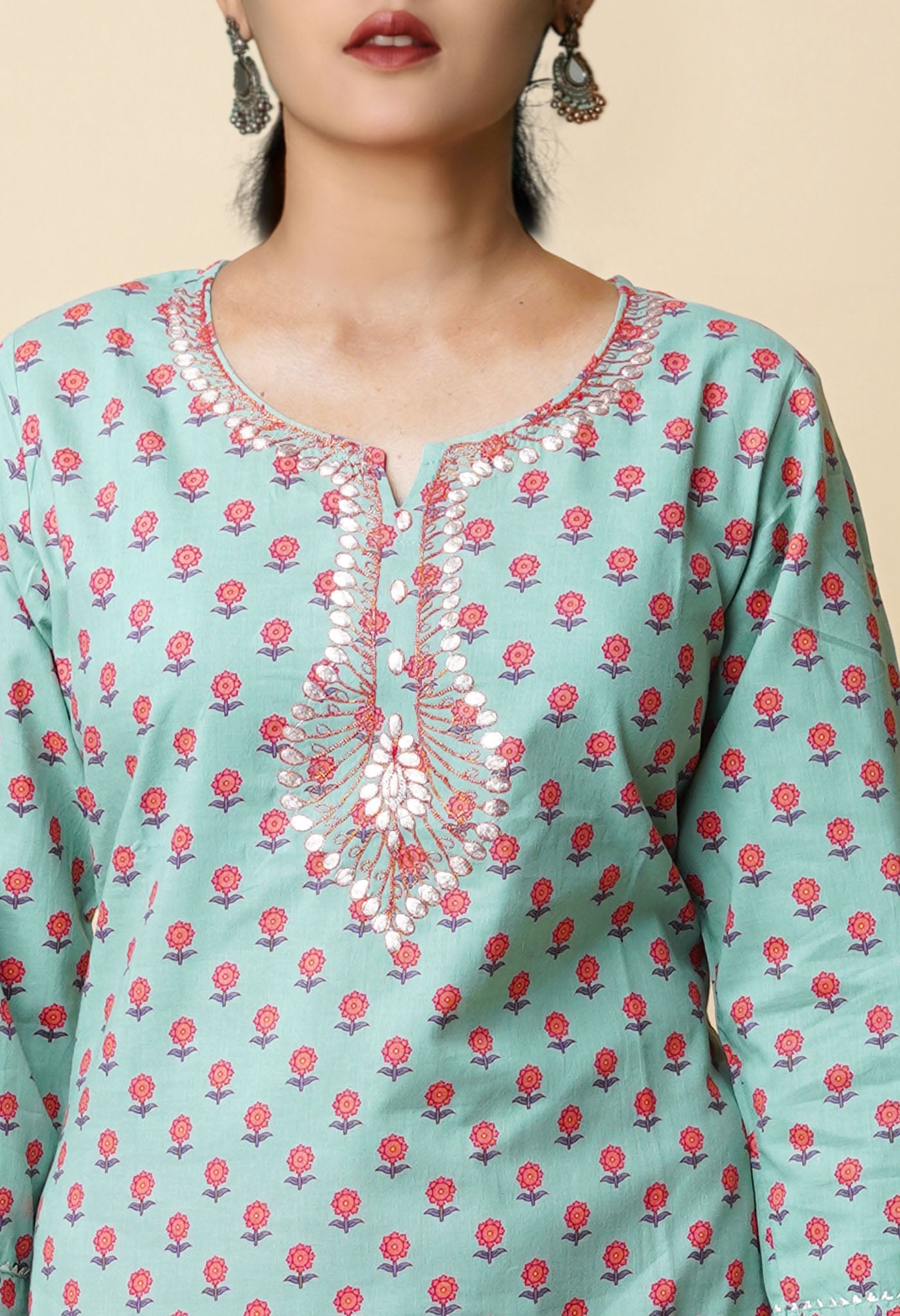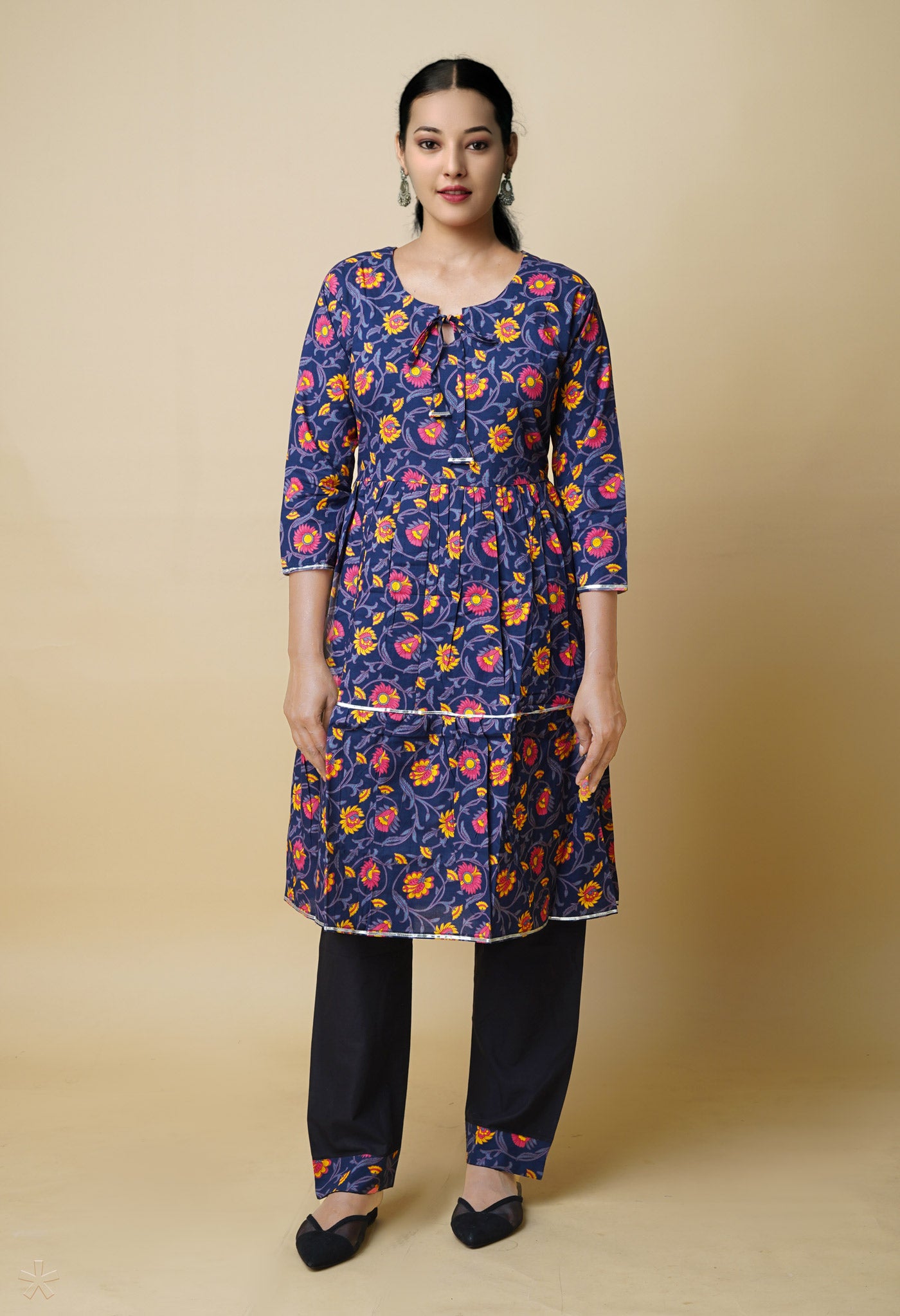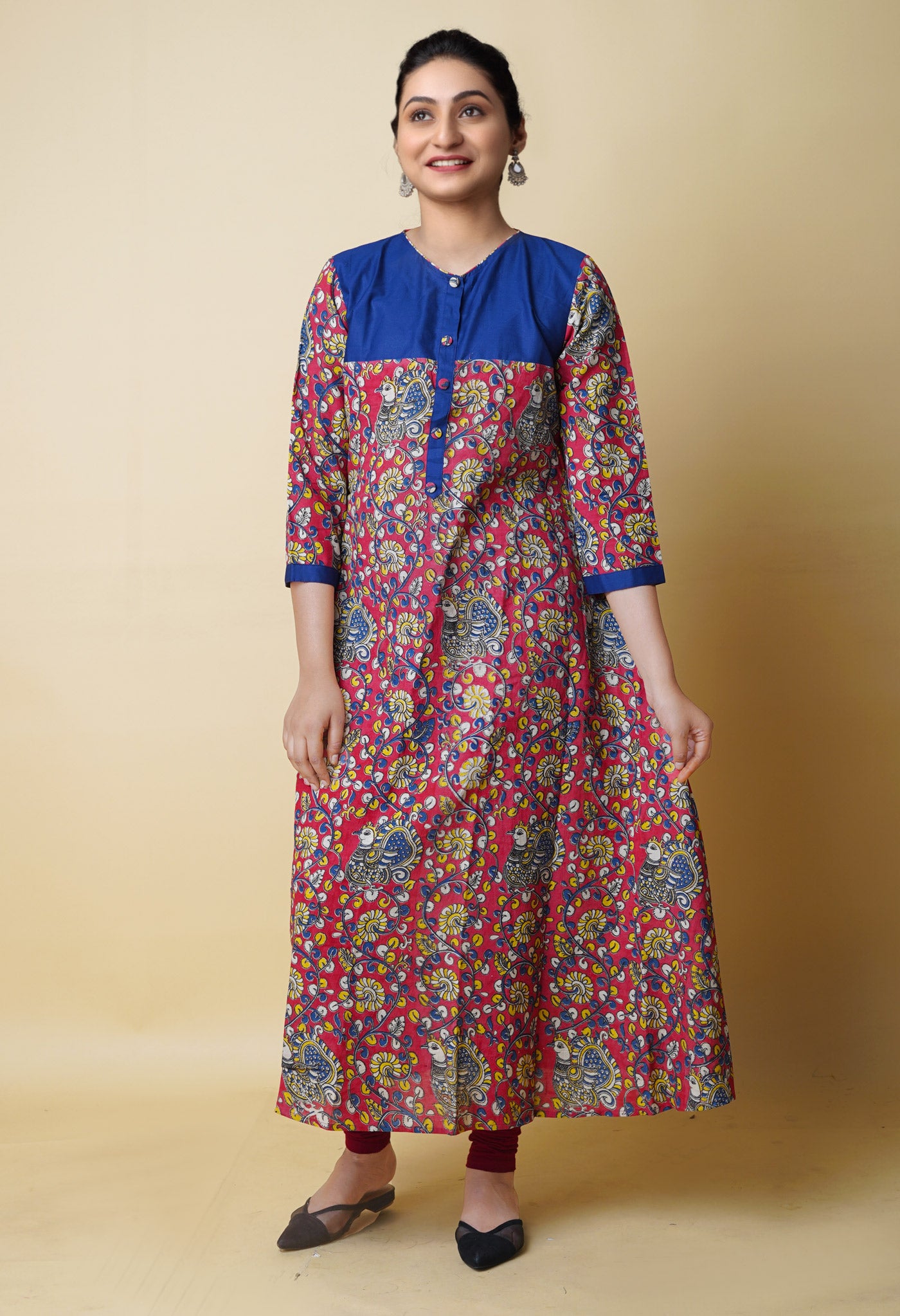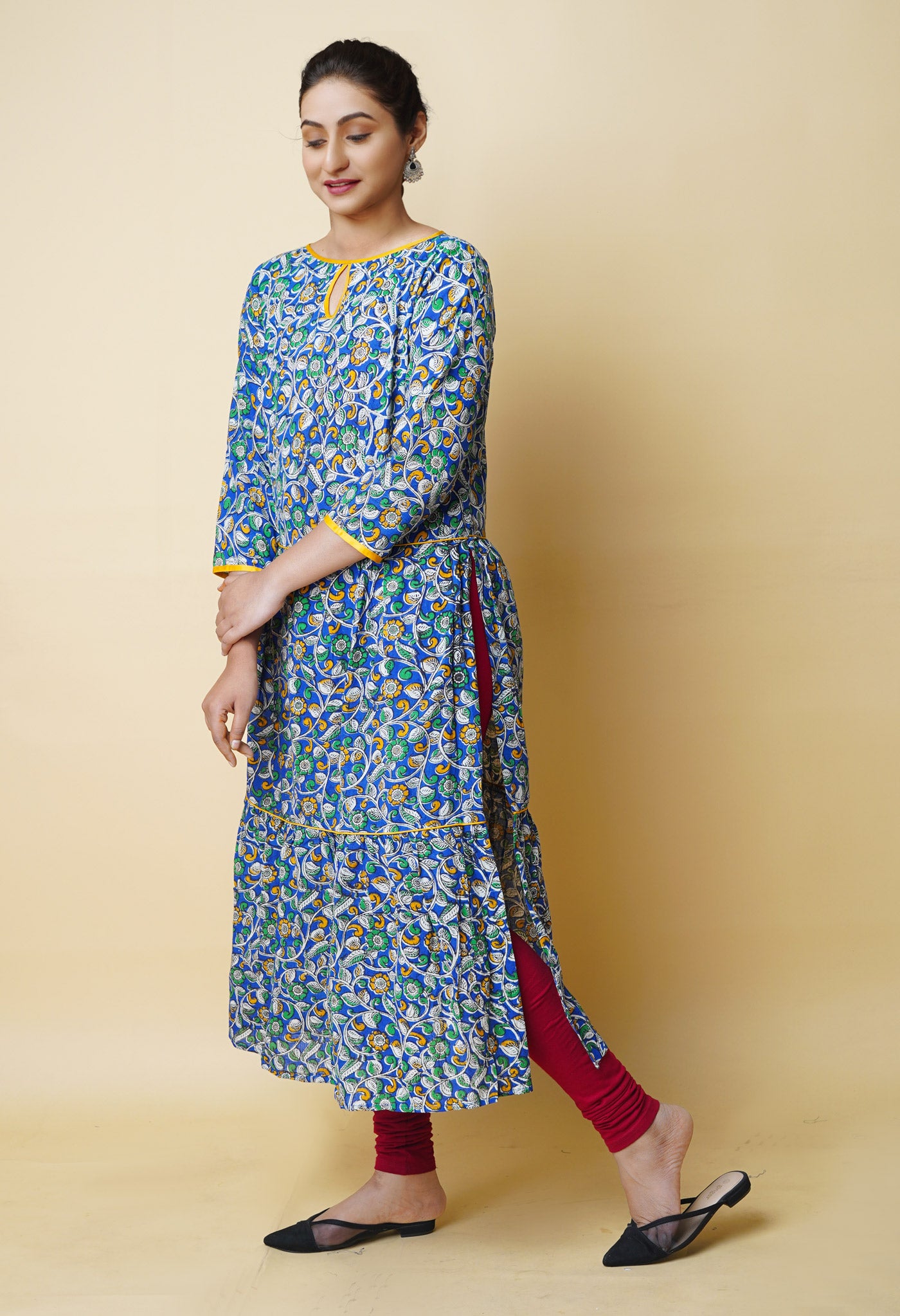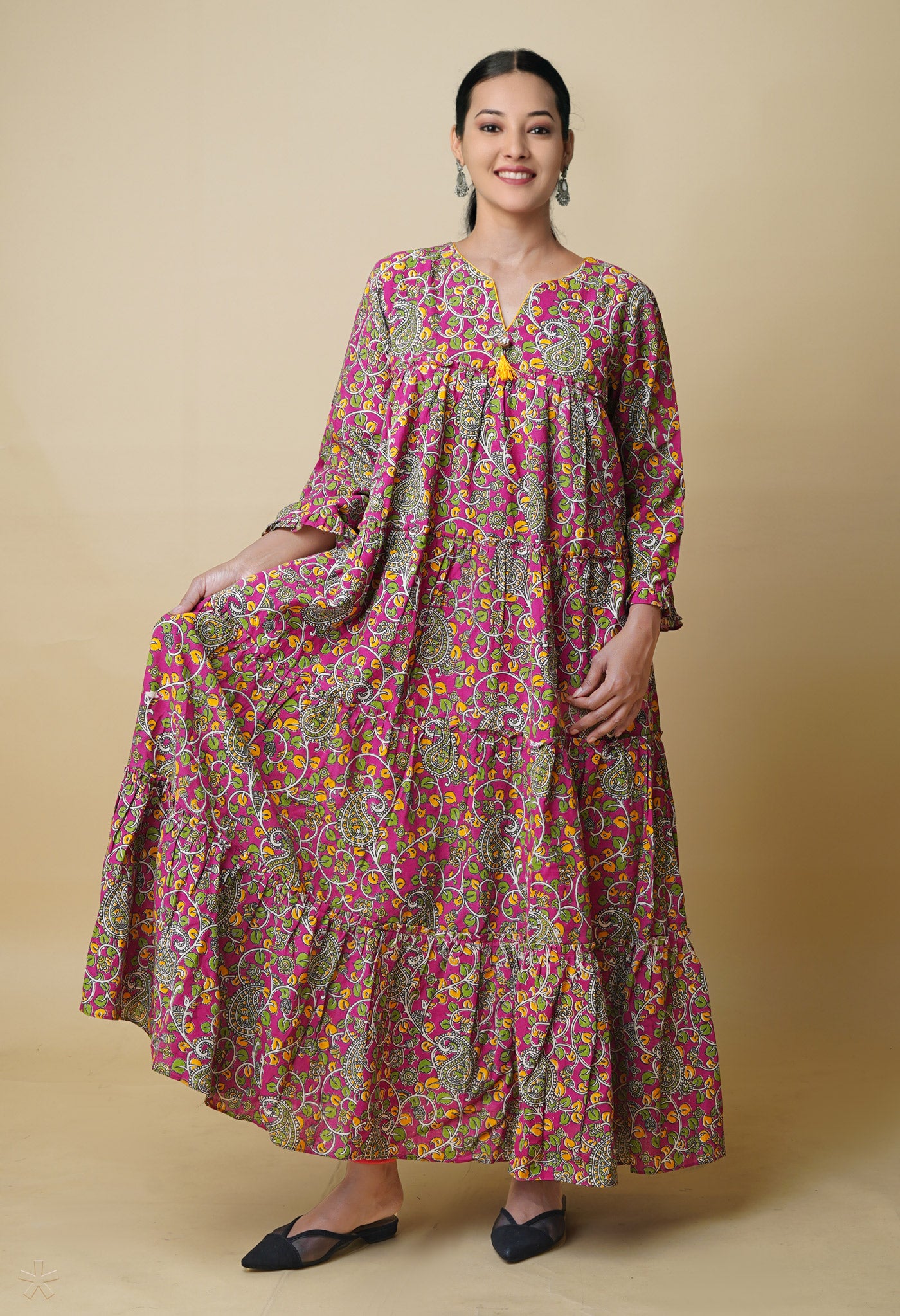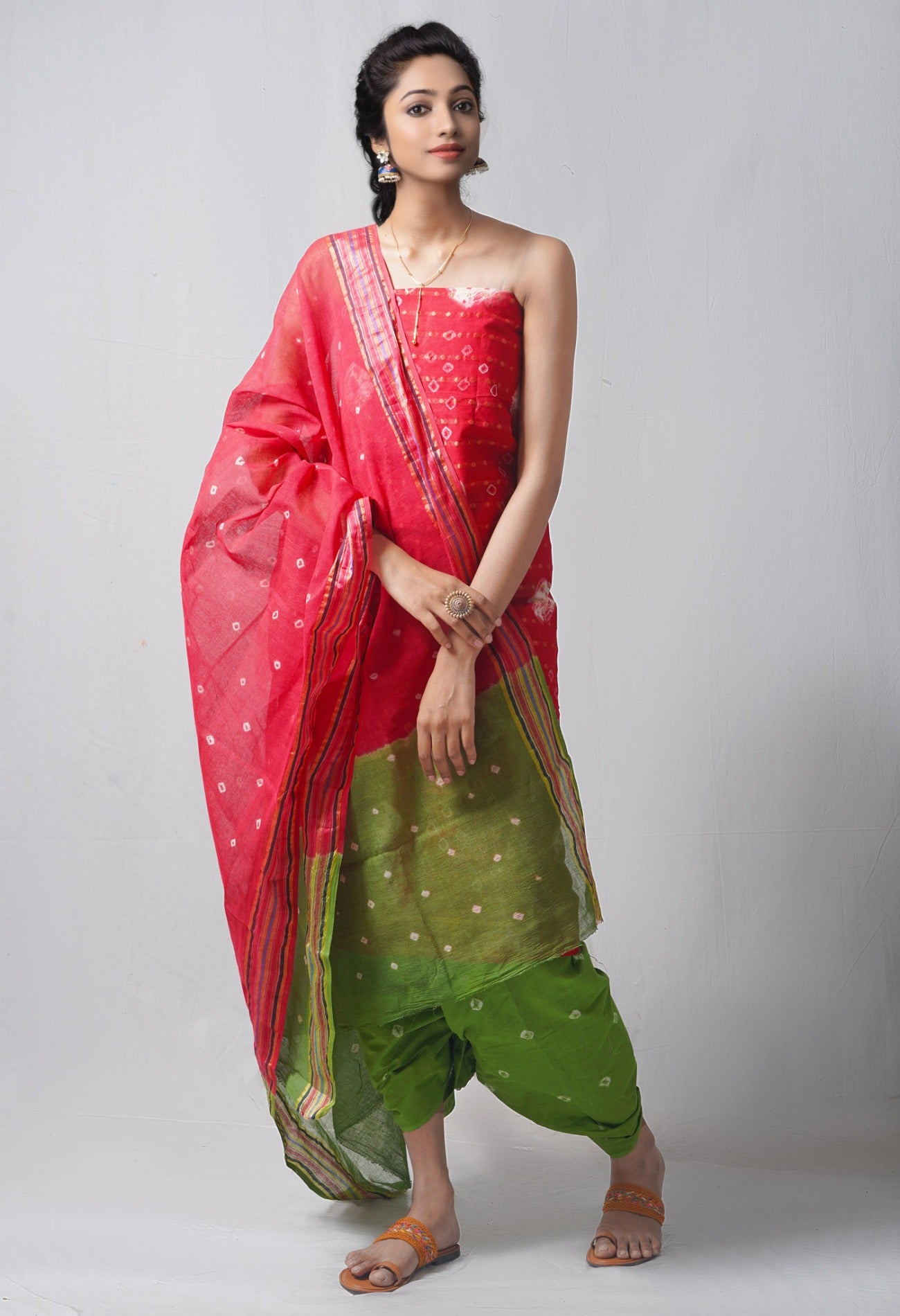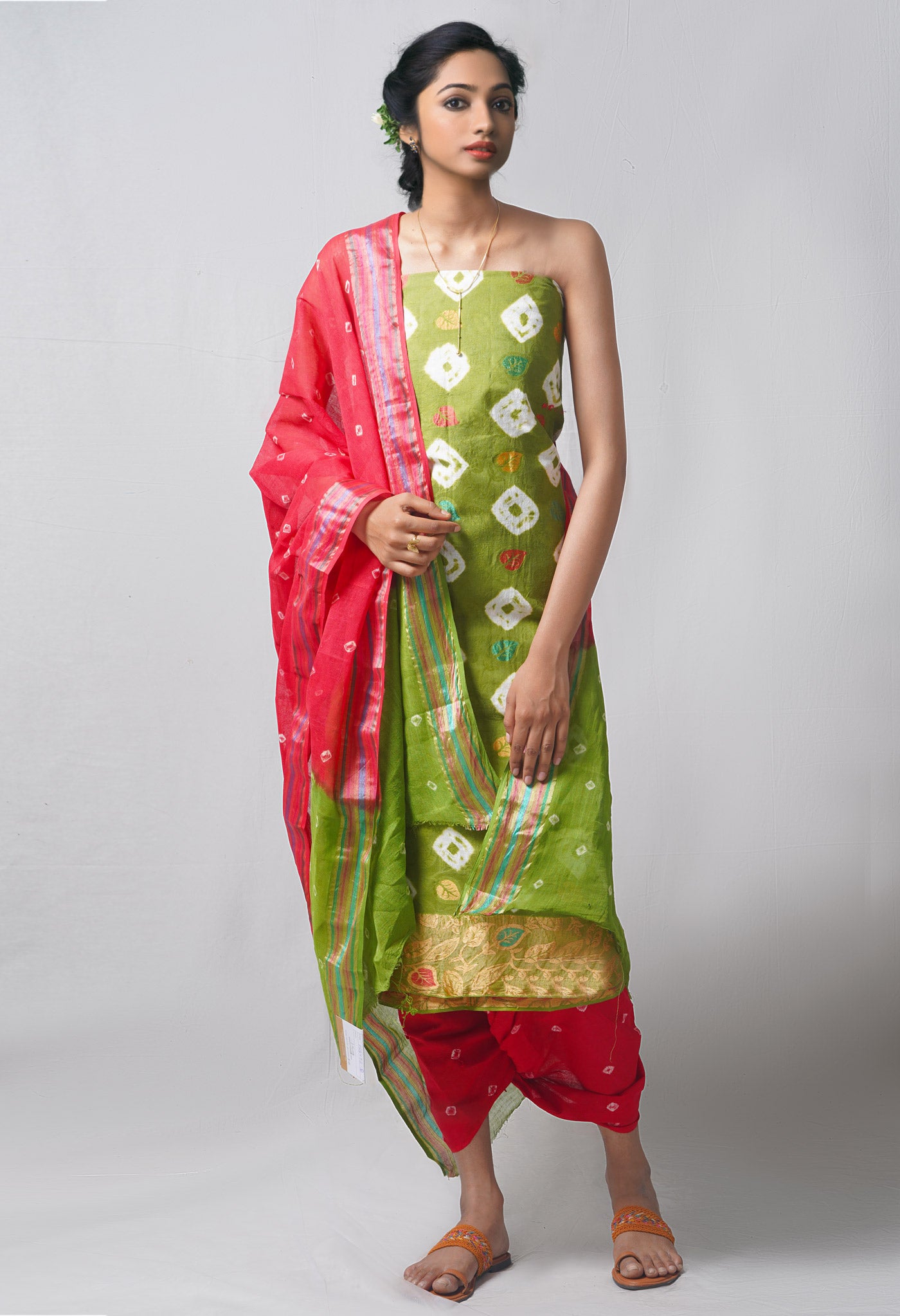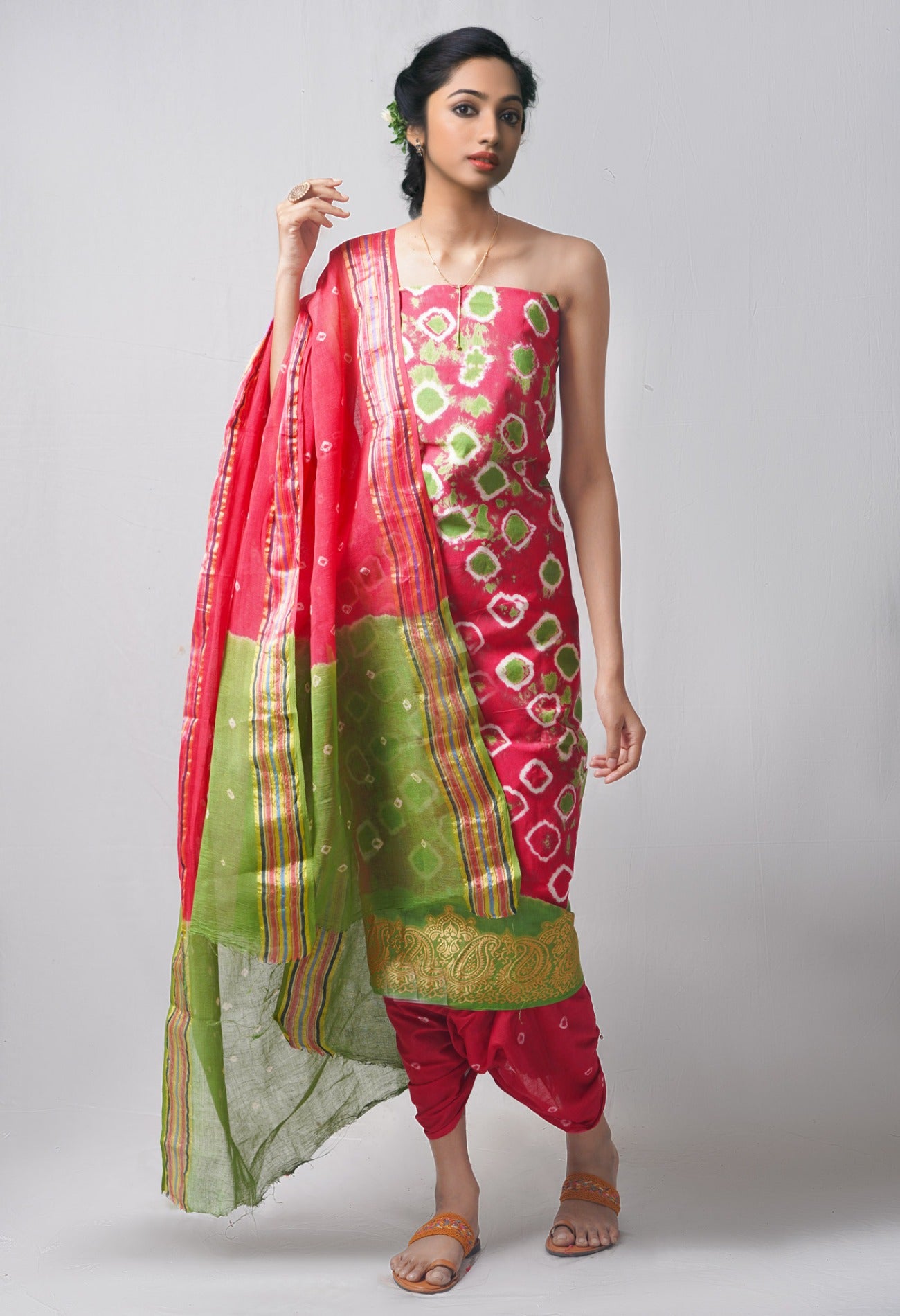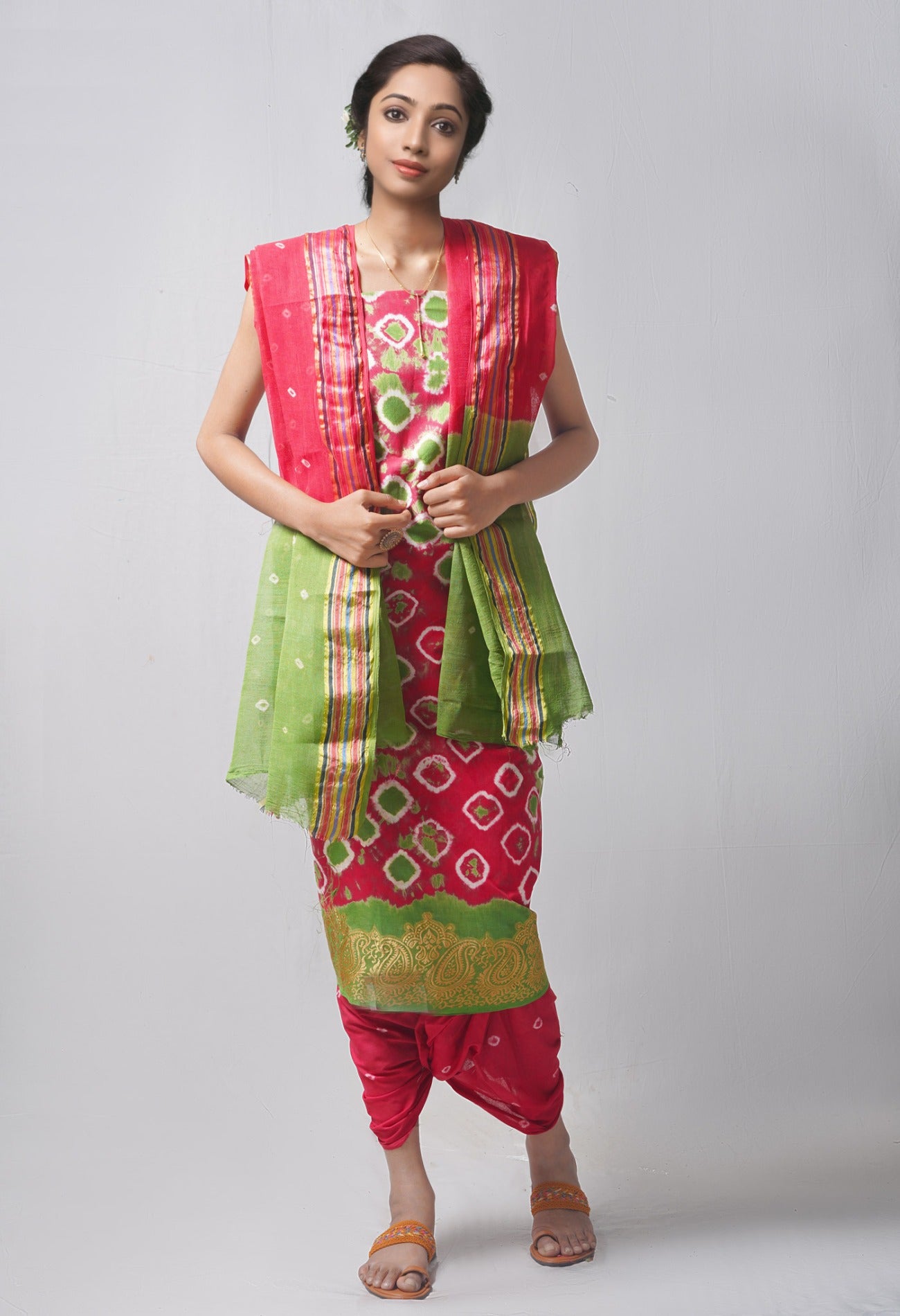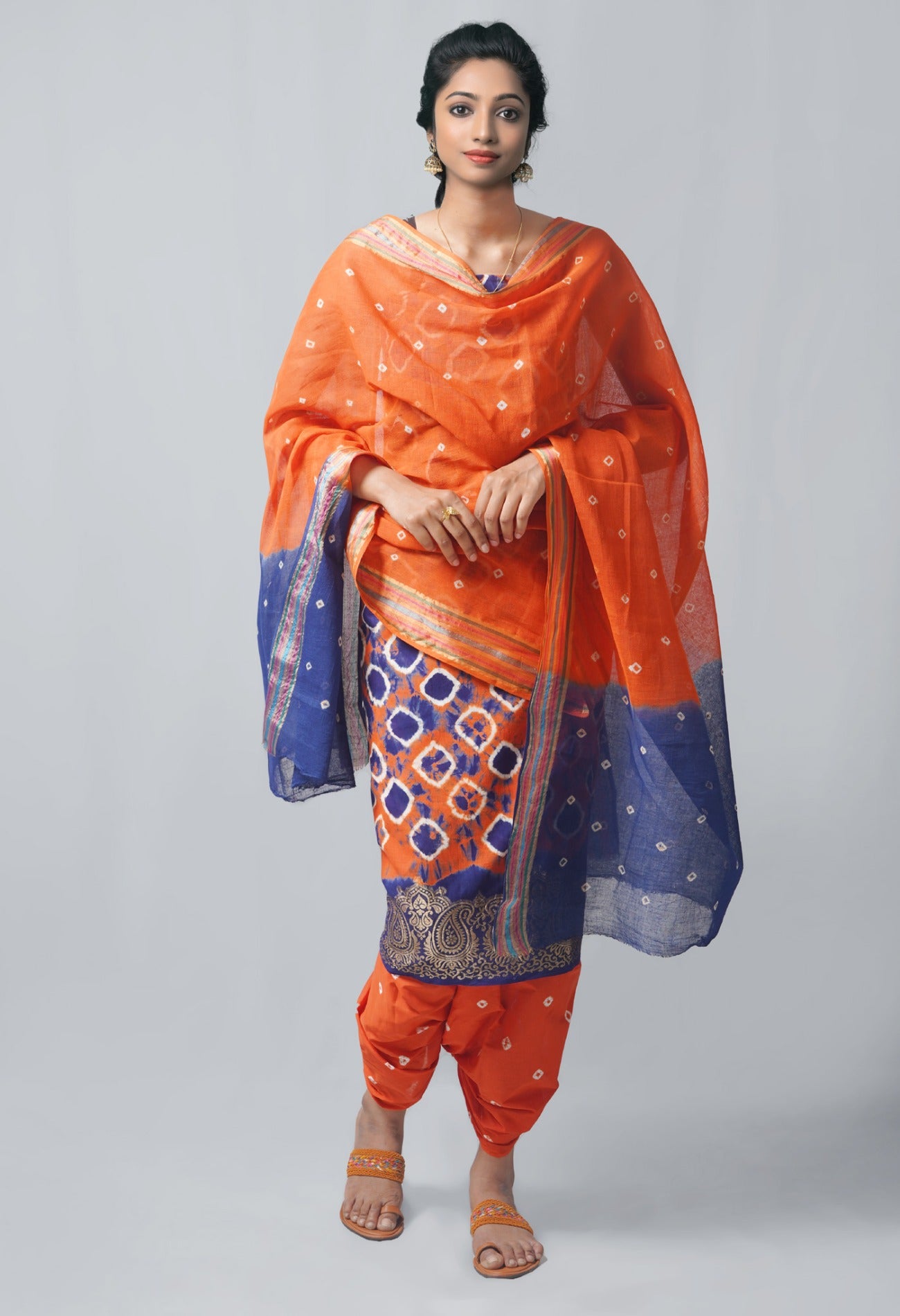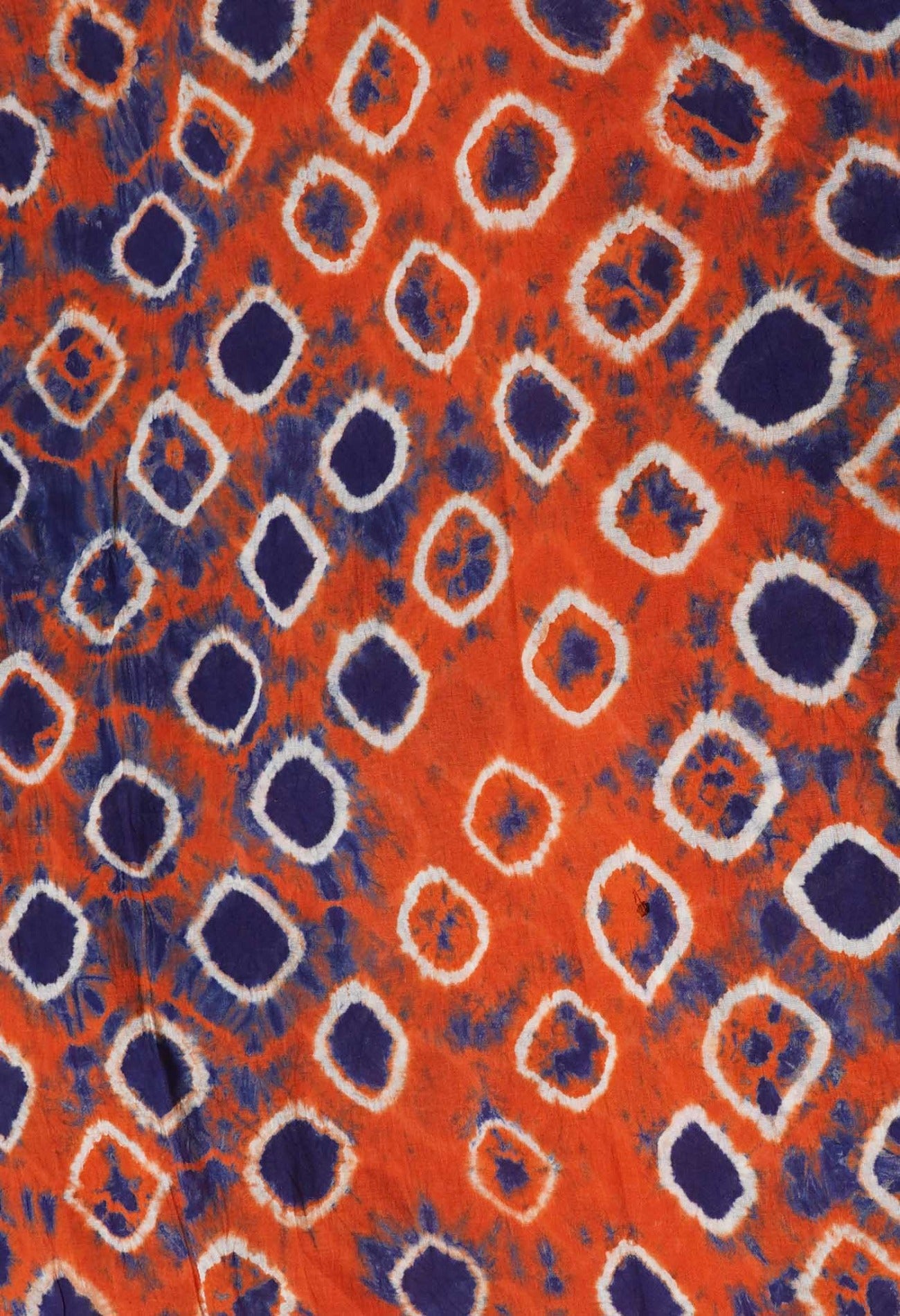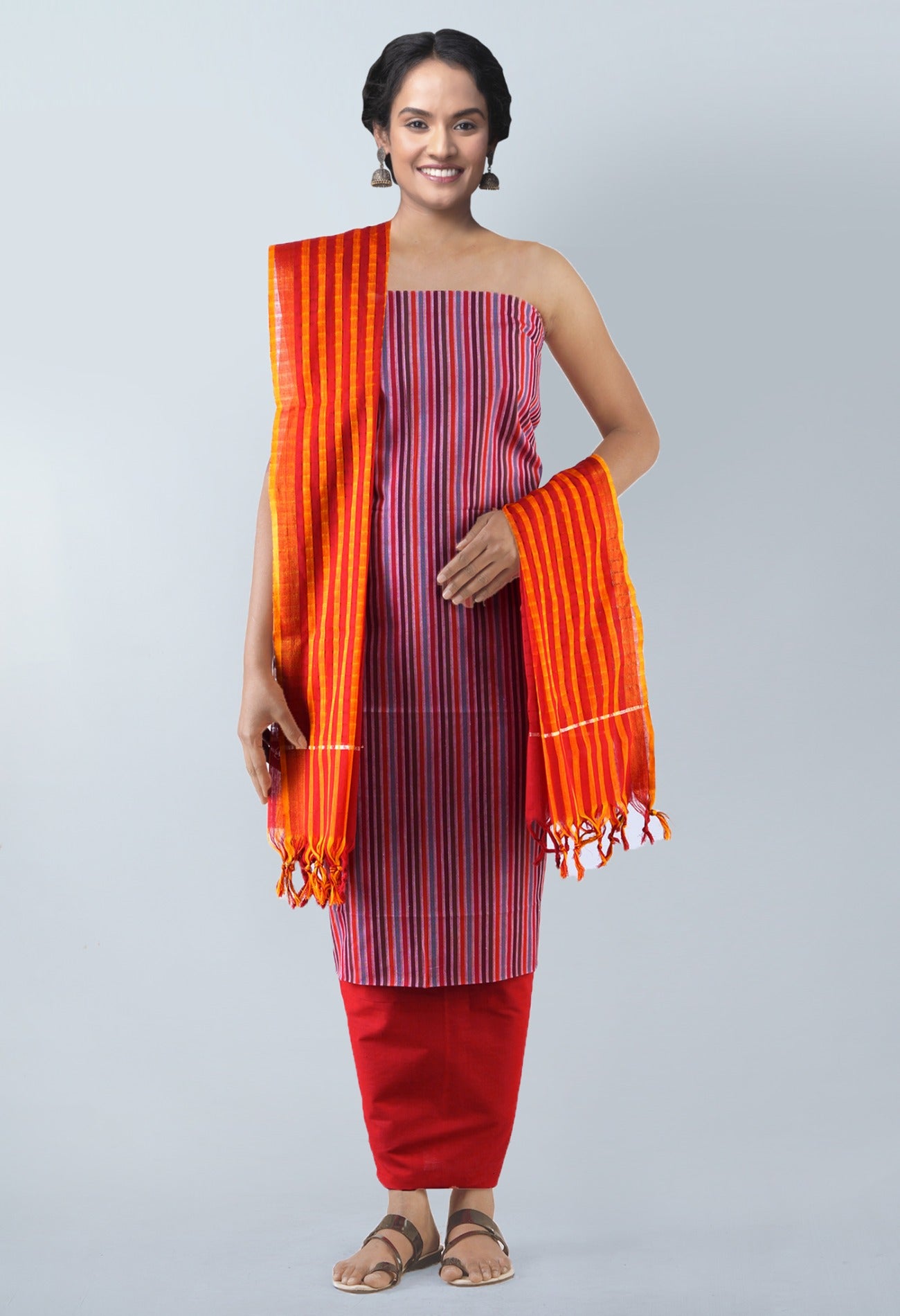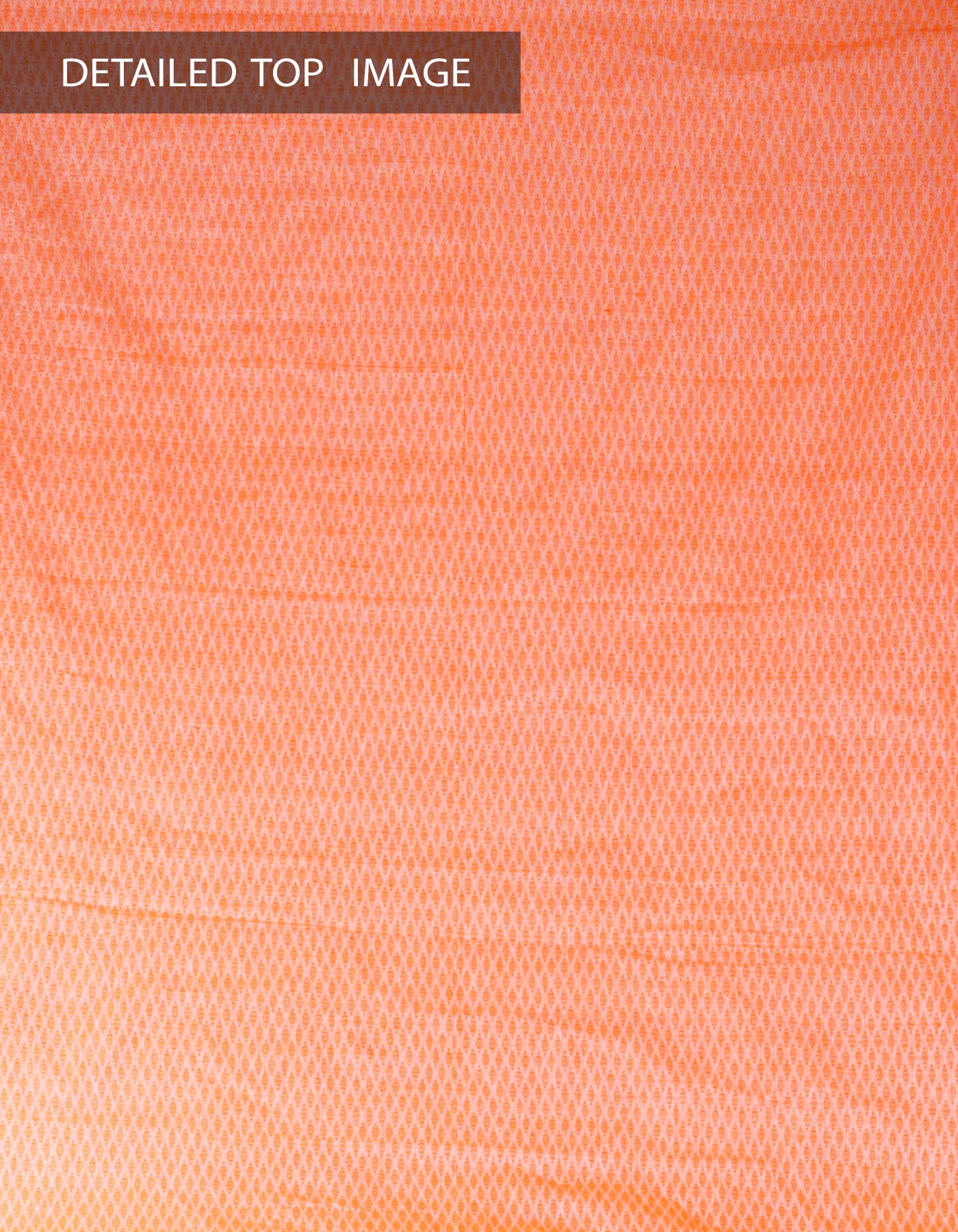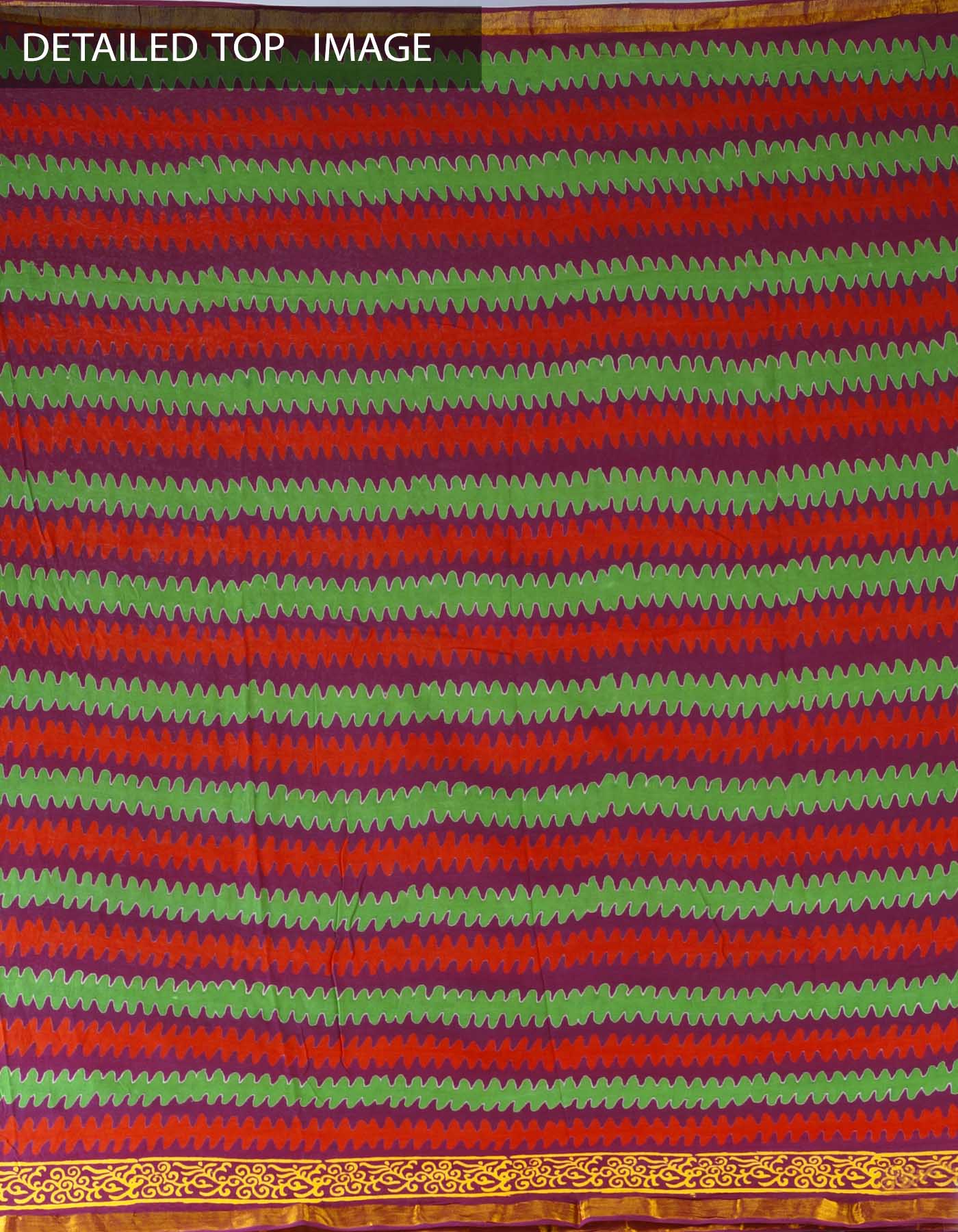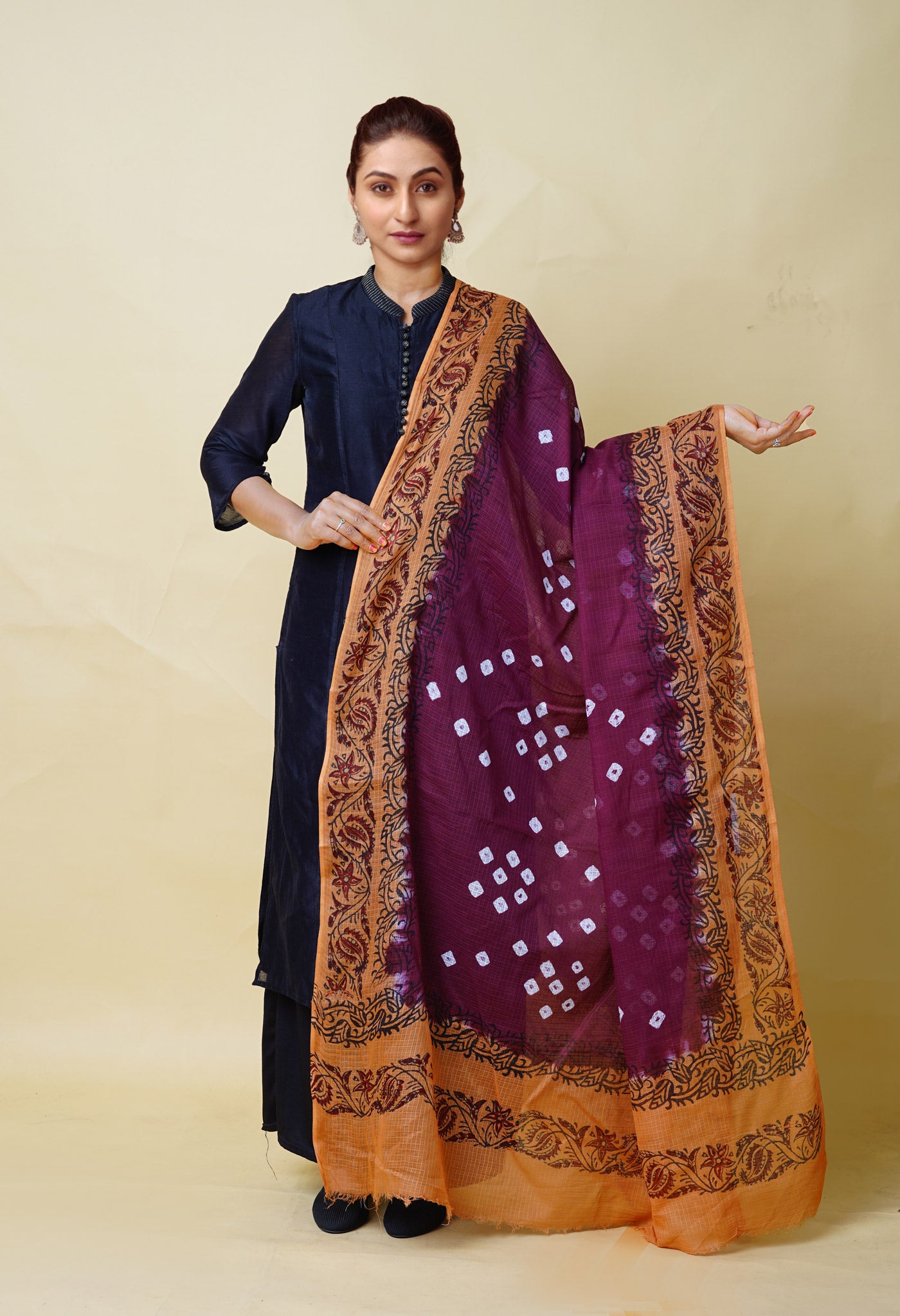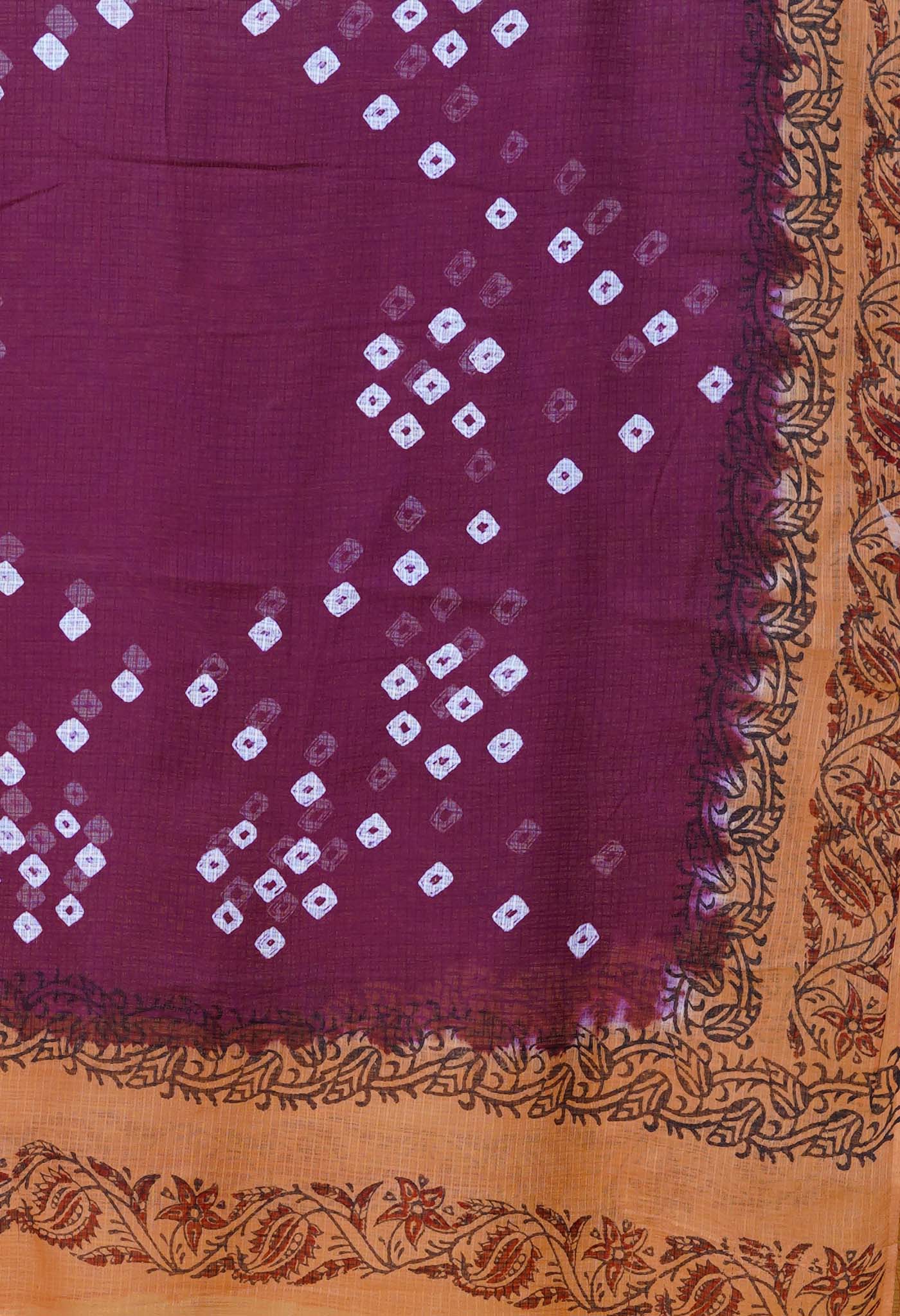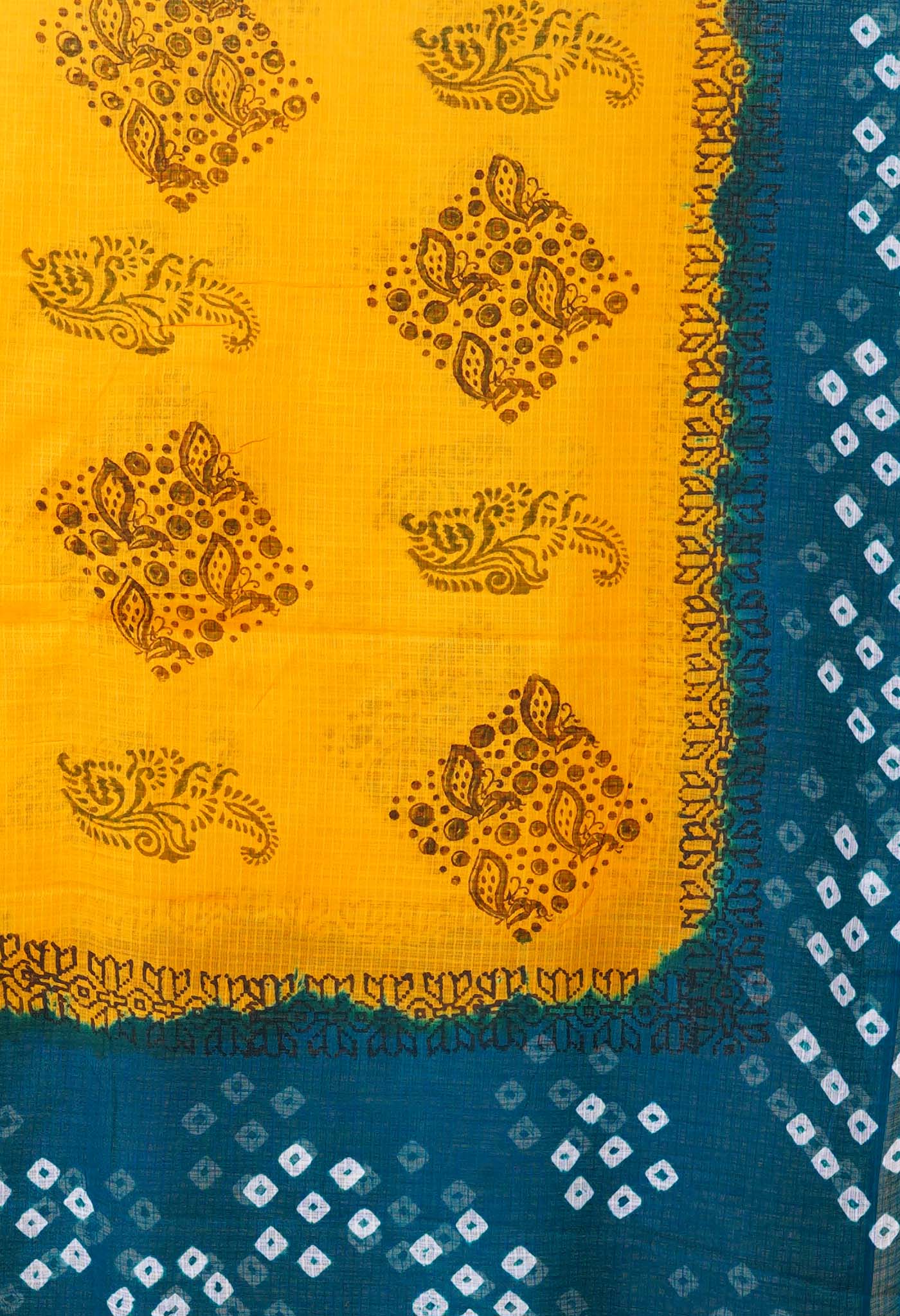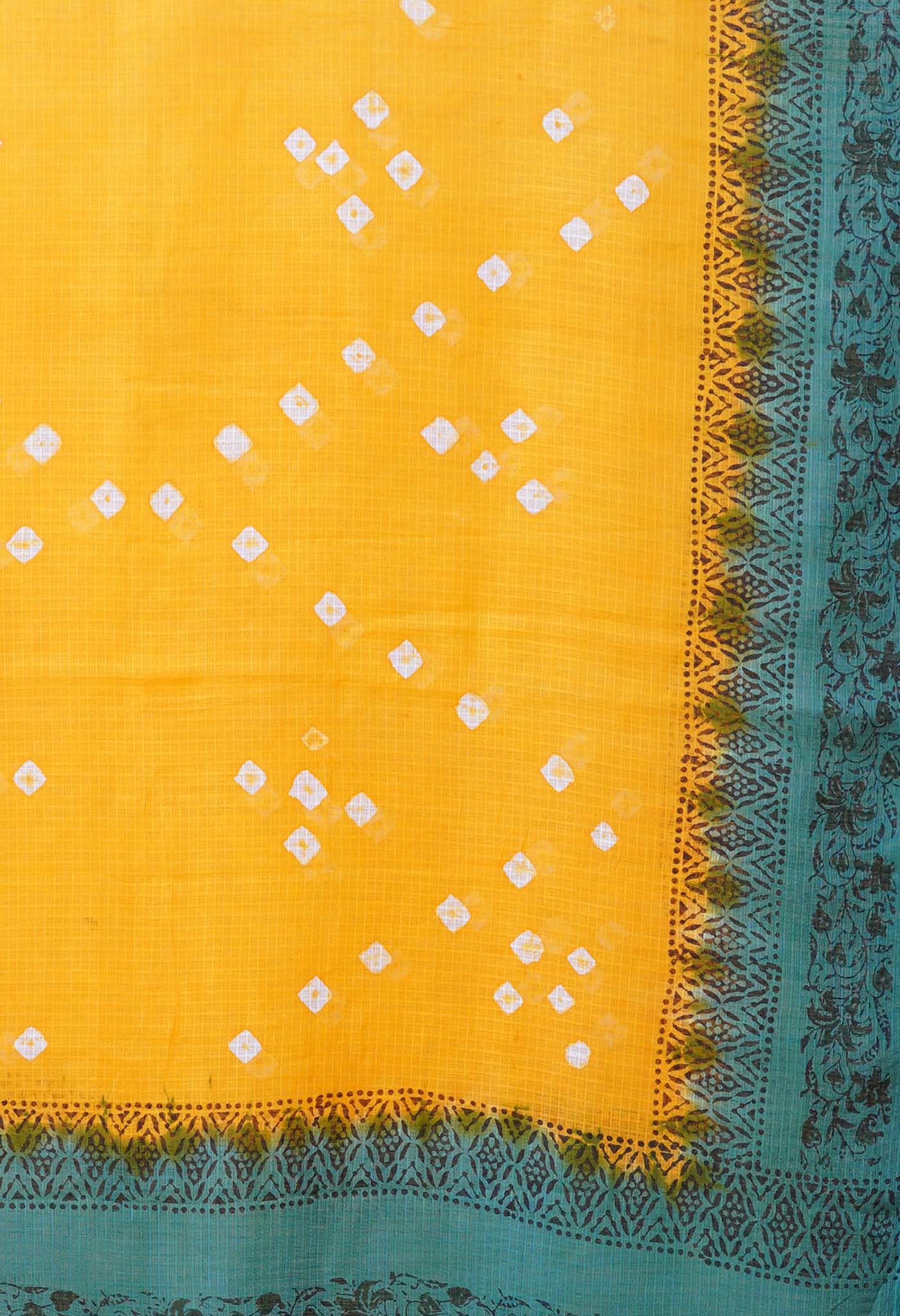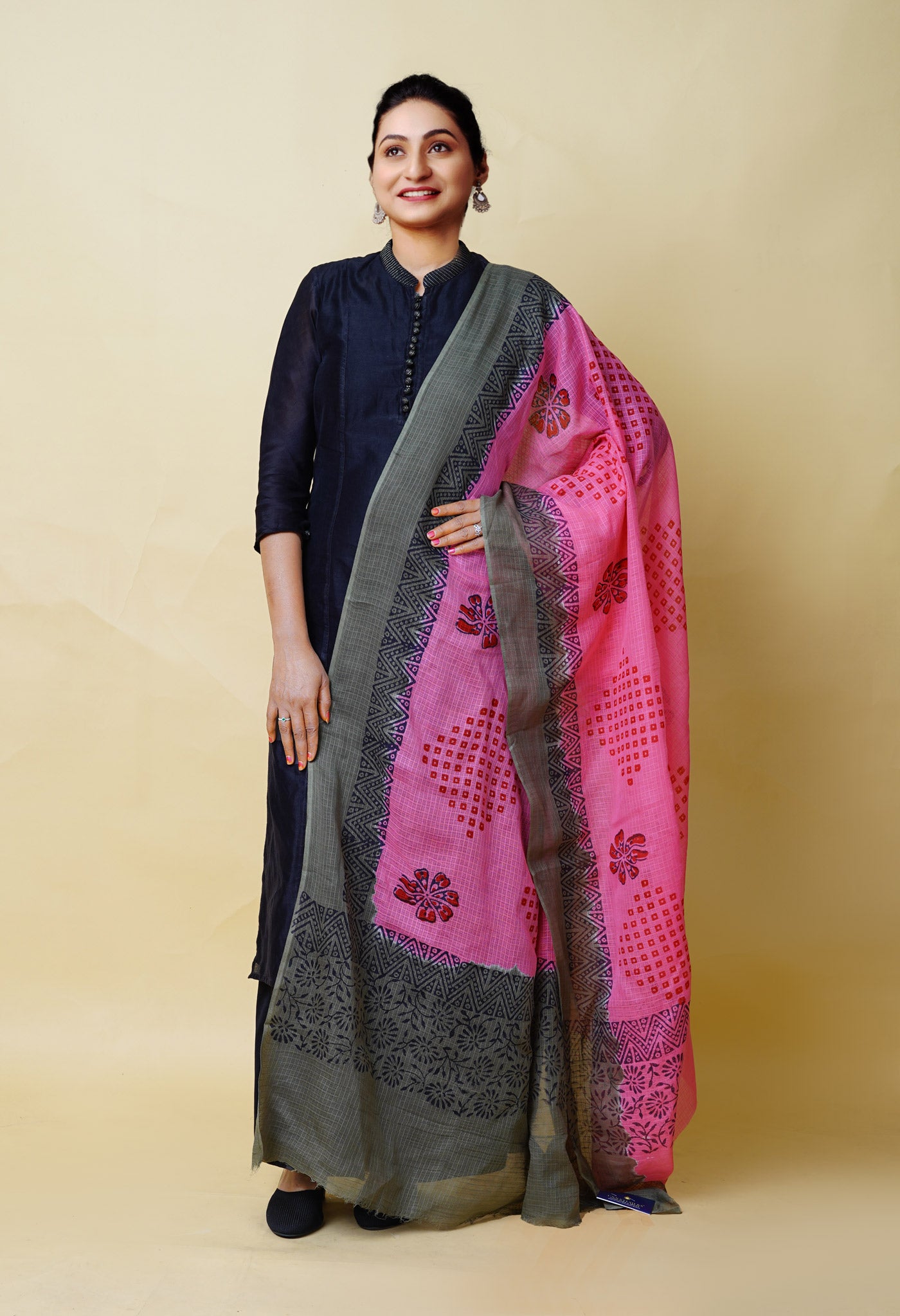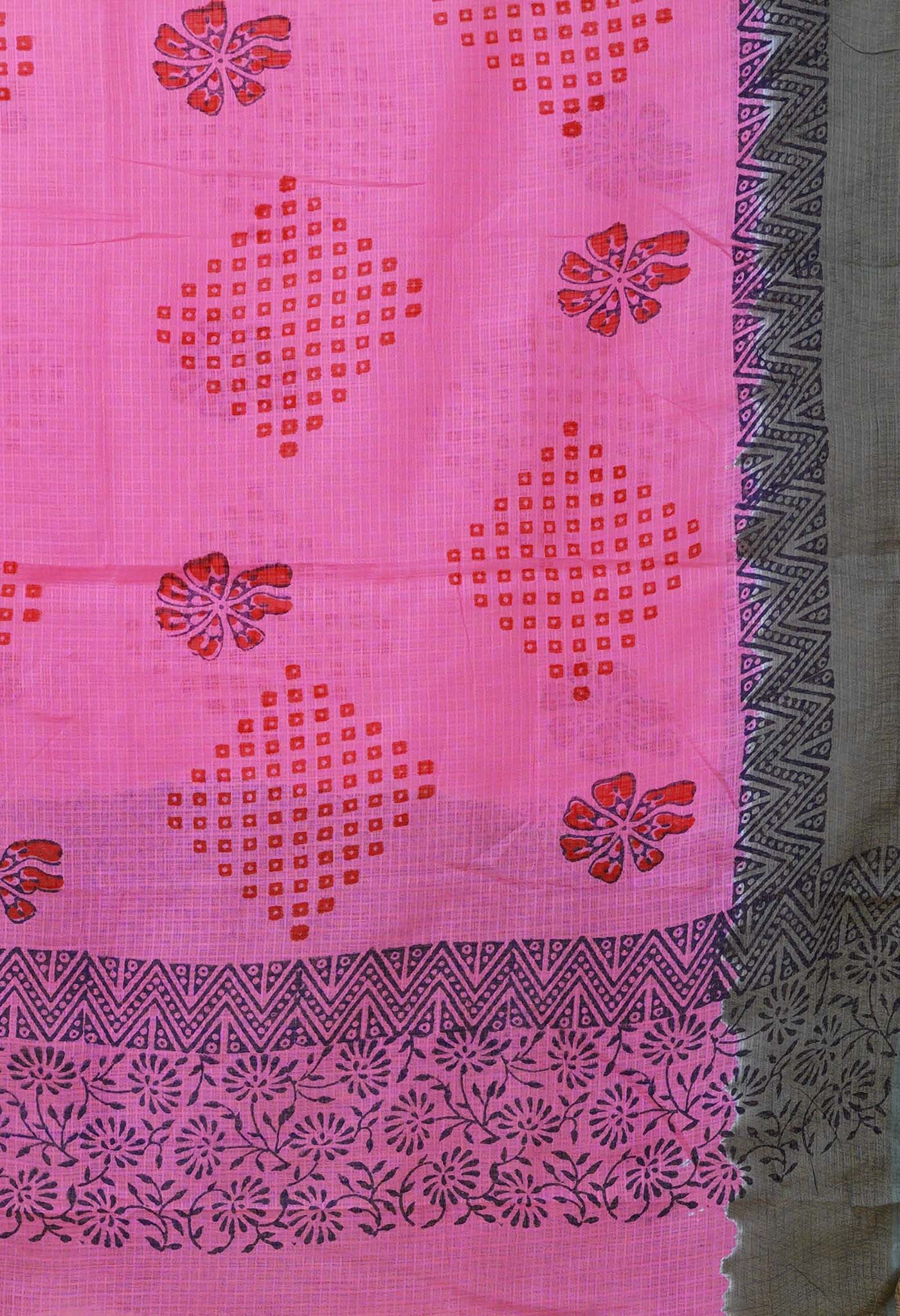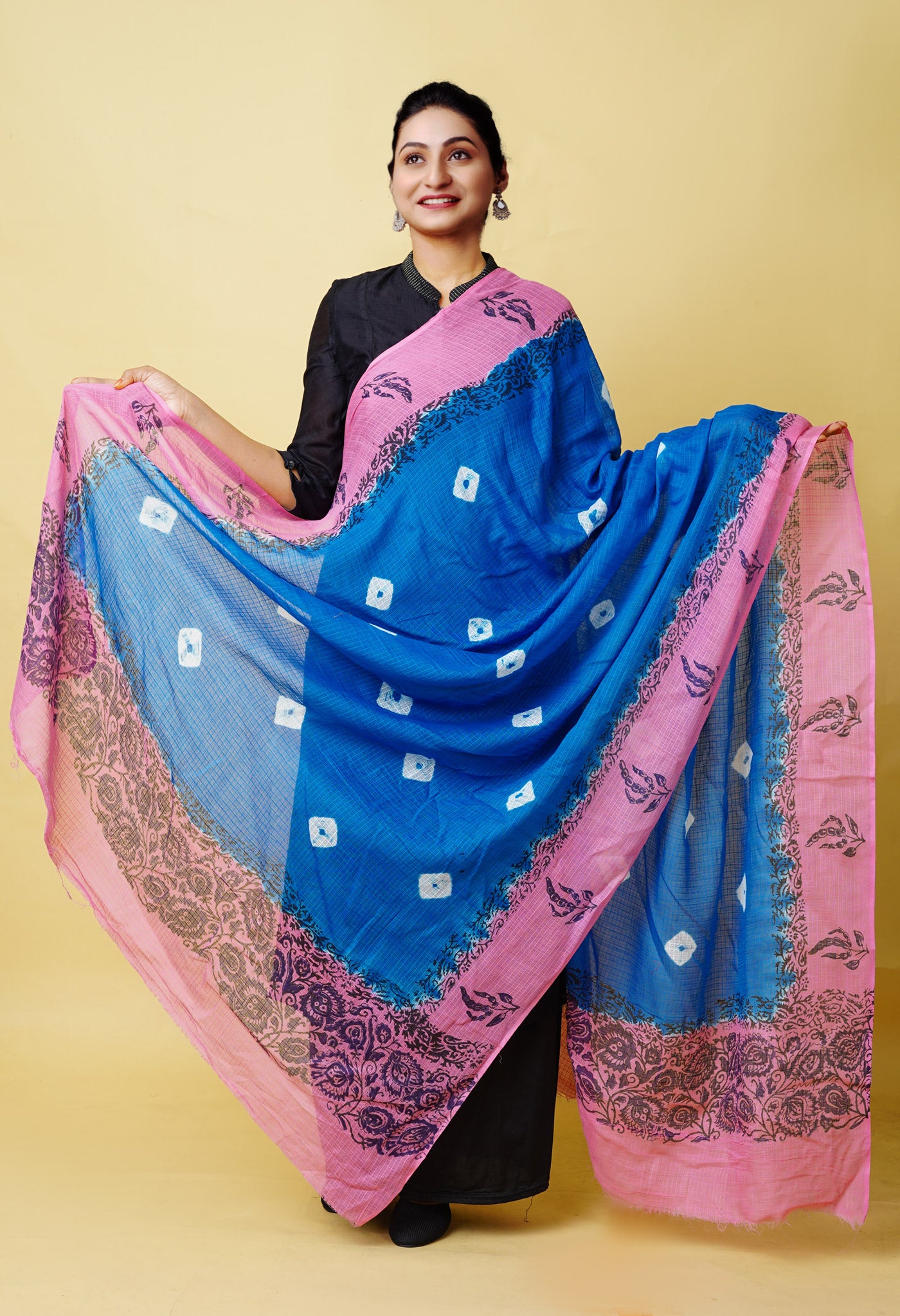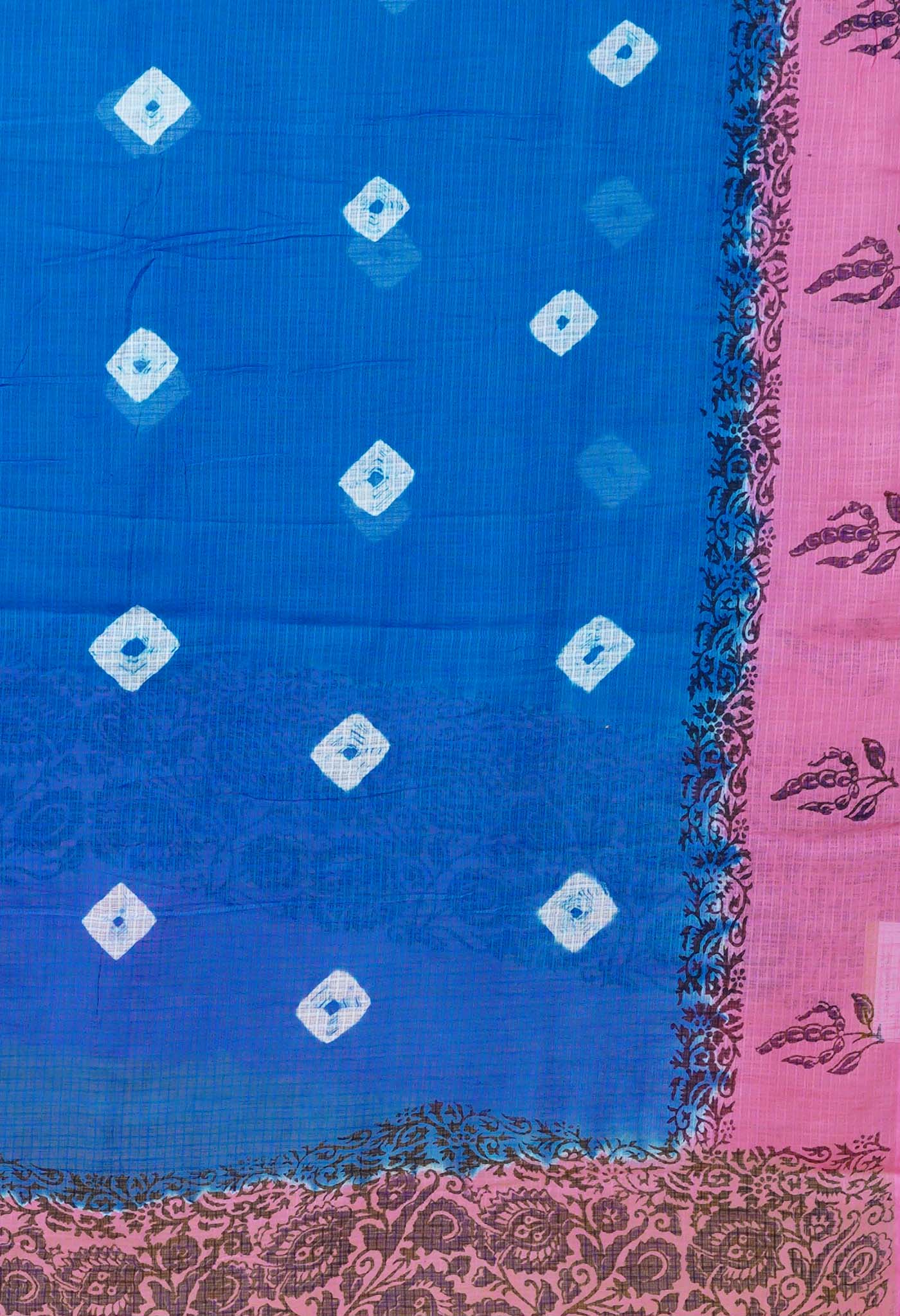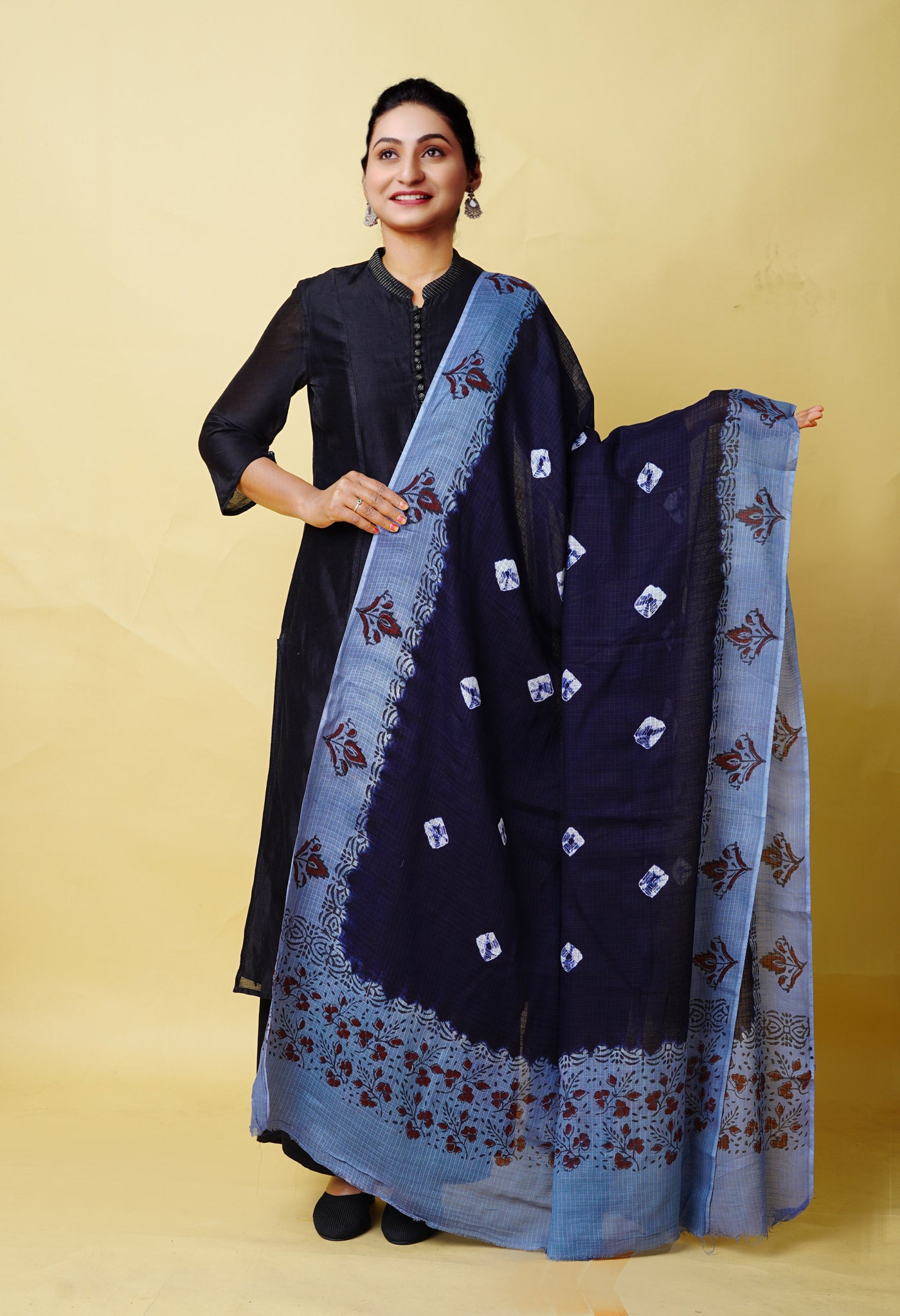
The magic of Indian handlooms during Durga Puja
What can one say about the saree that has not been said before? Traditional attire and yet trendy in look, it is indeed rightly acknowledged as the social fabric of the nation. Festival or wedding, function or party, casual outing or informal gathering, the saree is the Indian woman’s choice for any of these occasions if she has to look attractive, be singled out for attention. A fabric of elegance and allure, comfort and confidence, easy on the body and carried throughout the day, there is no other garment that can match the saree for its very many advantages.

Durga Puja Celebrations
If there is a country in the world known for its diversity of cultures and beliefs and celebrations marking occasions for a host of diverse reasons it is India. There is always a spirit of celebration in the country be it in pockets, among certain sections of people or a mass celebration of an event that may be observed in different ways but signifies a common link across the nation. Such a mass  celebration is Durga Puja.
celebration is Durga Puja.
Durga Puja or Durgotsava the annual Hindu festival that celebrates the worship of Goddess Durga and her various incarnations is from the seventh to the ninth day of the bright lunar fortnight in the Hindu month of Ashwin. However it includes Mahalaya the sixth day and Vijayadashmi the tenth day after the nine day period of Navaratri as an auspicious period during which Maa Durga blesses her devotees while in their midst. The significance of the festival is the display of triumph of good over evil in the slaying of the evil buffalo demon Mahishasura by Goddess Durga.
Widely celebrated in the states of Bengal, Assam, Bihar, Jharkhand, Manipur, Tripura and Odisha having a majority of Bengali Hindus, this festival devoted to the worship of Maa Durga also finds devotees spread across the Northern and Western states of India, as well as the neighbouring country of Nepal. Religious and cultural observances have also made their way to foreign shores like UK, USA, Canada, France, Germany, Australia, the Netherlands, Singapore and Kuwait to mention the fairly significant ones.
The appeal of the saree
The Indian saree, garment from ancient times, has over the passage of time been much explored and experimented with, to  transform from a traditional attire of need to a fashion fabric of appeal.
transform from a traditional attire of need to a fashion fabric of appeal.
The delightful variety from the plain, simple coloured and lightly adorned cotton and silk blends worn by many women in their daily routine, to the jazzy stylish heavily decorated silks with all sorts of finery and additive features known as fashion and special wear meant for exclusive occasions such as weddings, grand parties or social invites.
Saree fabric material could be cotton, silk, jute, nylon, rayon, Georgette, chiffon, satin etc. or blends. There is no dearth of traditional varieties and modern art silks and current tastes have encouraged brilliant fusion experiments of the two to evolve a new range of splendid never-before-seen fabrics having trending designs and patterns incorporated in the conventional handloom weaves.
The fabric spread in the handloom varieties across the country
Silks have always been a favourite with women because of the rich look, airy comfort and the exclusiveness in price compared to other fabrics. Especially costly pure silk sarees that range from 15000 rupees onwards to touch a lakh and above, are jealously guarded, worn with caution and care exercised at every step, to be worn for grand exclusive occasions only.
Cottons are preferred for summer or hot weather conditions and for long continuous spells of wearing. Light in weight, very airy, comfortable, cottons come in light shades and medium coloured hues and very preferred for casual outings, office, daily wear since they are not as costly as silks. However the new trend is to prefer cottons for long spells of wear. The cottons too with prints, batik, mercerization, adornments like zari, multi-color thread work, kundan work and a whole lot of other decorative features have made such fabrics very much attractive and beckoning by look, price already being so.
[/vc_column_text][/vc_column][/vc_row][vc_row][vc_column width="1/3"][vc_single_image image="10121" img_link_target="_self" img_size="400*400"][/vc_column][vc_column width="1/3"][vc_single_image image="10122" img_link_target="_self" img_size="400*400"][/vc_column][vc_column width="1/3"][vc_single_image image="10123" img_link_target="_self" img_size="400*400"][/vc_column][/vc_row][vc_row][vc_column width="1/1"][vc_column_text]
The wide and varied Handloom Durga Puja sarees at Unnati silks
You have the conventional wide red border on a plain background of white saree, the typical Bengali Durga Puja saree that is famous.
Then there are the Bengal handloom silk saris. Fine, smooth, of good texture, airy and light on the body, the Bengal Silk Saree is  preferred for almost any occasion. Prominent among the silk handloom saris of Bengal is the Baluchari and the Tangail Jamdhani. Fine count quality weaves, each has its specialty. The appeal of the Baluchari Saree lies in its colour harmony. Colours preferred are red, green, yellow, blue and their shades. Silk brocade designs suited to the base colour, are decorated with attractive motifs. The Pallav or Pallu is generally adorned by folk lore or mythological themes. Balucharis are made from silk. With silk brocade designs suited to the base colour, they are decorated with attractive motifs. One of the major themes that adorn the Pallav or Pallu of the Baluchari Saree are mythological stories depicted on the walls of the terra cotta temples that the Malla rulers had built and are located in present day Bengal.
preferred for almost any occasion. Prominent among the silk handloom saris of Bengal is the Baluchari and the Tangail Jamdhani. Fine count quality weaves, each has its specialty. The appeal of the Baluchari Saree lies in its colour harmony. Colours preferred are red, green, yellow, blue and their shades. Silk brocade designs suited to the base colour, are decorated with attractive motifs. The Pallav or Pallu is generally adorned by folk lore or mythological themes. Balucharis are made from silk. With silk brocade designs suited to the base colour, they are decorated with attractive motifs. One of the major themes that adorn the Pallav or Pallu of the Baluchari Saree are mythological stories depicted on the walls of the terra cotta temples that the Malla rulers had built and are located in present day Bengal.
Besides that there is the Muga silk having glossy texture, that is fine and durable. Fine lattices in the weave, self colored checks is a pattern that is almost religiously followed. What is even more attractive is the soft and smooth feeling, the characteristic addition of zari to the border to improve the look. Sometimes it is replaced by multi colored threads. Patterns like fruits, flowers, diamonds,  animals, birds as motifs, accompany the base fabric. Light on the body, with cosy feel and classy look, the Muga silk sarees are very much alluring.
animals, birds as motifs, accompany the base fabric. Light on the body, with cosy feel and classy look, the Muga silk sarees are very much alluring.
There are spectacular offerings of the Orissa Handloom Sarees. You have exquisite and mind-boggling double ikat woven patterns of flora and fauna, dancing dolls, temple design and others in striking colour contrasts and with naksi borders. The pallu is pure designer with ikkat weaving and floral designs interspersed. It is a delightful variety to display on those exclusive occasions like weddings, parties, festivals and social functions. You have dual colour contrasting colour ikat prints in light hues with ikkat woven borders that have a noticeable presence, very much suitable for exclusive and casual occasions alike. There are other permutations and combinations with variation in motifs, patola weaving on the pallu, exotic bootis on the borders and so on.
The traditional Sambalpuri Saree in its cotton and silk versions is a captivating fabric from the tribal belt of Odisha. The Ikkat style of weaving is employed in the hand-woven Sambalpuri sari using geometrical patterns. Ikkat is in pre-determined patterns, and  variants of single-ikkat and double-ikkat. Alternately the tie-die method of weaving and then dyeing, known as ‘bandhakala’ is also used. Here the threads are first woven and the resist bindings then applied to the fabric before dyeing it. This traditional art uses vegetable dyes to a large extent, with a leaning toward artificial colours in present day creations. Sambalpuri silk sarees find preference for exclusive occasions like weddings, as bridal attire, parties, festivals, social functions and traditional rituals.
variants of single-ikkat and double-ikkat. Alternately the tie-die method of weaving and then dyeing, known as ‘bandhakala’ is also used. Here the threads are first woven and the resist bindings then applied to the fabric before dyeing it. This traditional art uses vegetable dyes to a large extent, with a leaning toward artificial colours in present day creations. Sambalpuri silk sarees find preference for exclusive occasions like weddings, as bridal attire, parties, festivals, social functions and traditional rituals.
The exclusive Bomkai silk Saris employ the ikat style of tie-dye, where the threads are dyed with contrasting colours before they are woven with a special ‘extra weft’ technique. Jacquard is also sometimes employed to get unique and fascinating designs woven into the main fabric. A special method of cutting warp ends of a colour and re-tying them to different coloured warp ends, known as ‘muha-johra’ is used to create a dense layer of colours at the end piece (pallu) of the Saree.
Banarasi Supernet Sarees are a blend of silk and cotton in different proportions. Their fine transparent weave, attractive designs  and beautiful borders, give the women who wear them, a captivating look. Bewitching block prints of geometrical shapes and batik floral designs, beautify the Supernet saree. Hand -made designs and the use of fabric paints are also used as an adorning feature for the Supernet to make it look very appealing. Basically the Super Net saree is a mesh weave through which hardly anything can pass. The word super indicates the closeness of the warp and weft threads to form a fine lattice network. Due to this fineness or smooth texture of the silken threads, the Supernet is able to attain a lustre and shimmering effect, that is very much appealing. Additionally this feature also provides for seamless inclusions of brilliant crochet work, embroidery and other intricately woven adornments that elevates the elegance further. Having a good affinity to take on most dyes, the supernet is a bright display of vibrant colours of pleasing hues.
and beautiful borders, give the women who wear them, a captivating look. Bewitching block prints of geometrical shapes and batik floral designs, beautify the Supernet saree. Hand -made designs and the use of fabric paints are also used as an adorning feature for the Supernet to make it look very appealing. Basically the Super Net saree is a mesh weave through which hardly anything can pass. The word super indicates the closeness of the warp and weft threads to form a fine lattice network. Due to this fineness or smooth texture of the silken threads, the Supernet is able to attain a lustre and shimmering effect, that is very much appealing. Additionally this feature also provides for seamless inclusions of brilliant crochet work, embroidery and other intricately woven adornments that elevates the elegance further. Having a good affinity to take on most dyes, the supernet is a bright display of vibrant colours of pleasing hues.
The Jamdani weaving tradition is one of the most time and labor intensive forms of hand loom weaving. Intending to improve the aesthetic appeal, it takes the form of cotton and gold thread weaving to create motifs of geometric patterns and floral designs in colourful hues. Jamdhani hand weaving is a necessary accompaniment for Bengal sarees. Based on the variations in the Jamdani weave, sarees can be termed as Daccai Jamdani, known for its colourful motifs, the Shantipur Jamdhani for its soft texture, the Tangail Jamdani for its traditional borders and the Dhonekai Jamdani for its colourful hues.
[/vc_column_text][vc_gallery type="image_grid" interval="3" images="10131,10132,10133,10134,10135,10136,10137,10138,10139,10140,10141,10142,10143,10144,10145,10146,10147,10148,10149,10150" onclick="link_image" custom_links_target="_self"][vc_column_text]
Besides these there are other varieties that spell class and comfort, sarees that provide style, fabrics that ensure quality, handloom weaves of fine counts, exceptional and expressive.
A collection from a section of weavers in a dedication to Maa Durga!
[/vc_column_text][vc_cta_button call_text="For Ethnic Collection of saris for Durga Pooja" title="Buy Now" target="_blank" color="btn-success" icon="none" size="wpb_regularsize" position="cta_align_right" href="http://www.unnatisilks.com/gosf-sarees.html"][/vc_column][/vc_row]


